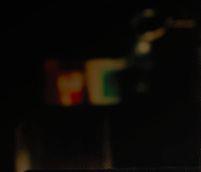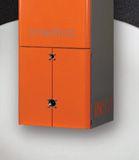THE FUTURE OF FAST






































EDITORIAL
EDITORIAL DIRECTOR, FOOD NEWS MEDIA: Danny Klein danny@qsrmagazine.com
MANAGING EDITOR, FOOD NEWS MEDIA: Nicole Duncan nicole@qsrmagazine.com
DIRECTOR OF CUSTOM CONTENT: Peggy Carouthers peggy@qsrmagazine.com
CUSTOM CONTENT ASSOCIATE EDITOR: Charlie Pogacar charlie@qsrmagazine.com
CUSTOM CONTENT ASSOCIATE EDITOR: Kara Phelps kara@qsrmagazine.com
CONTENT EDITOR: Ben Coley ben@qsrmagazine.com
STAFF WRITER: Trevor Griner Trevor@qsrmagazine.com
ART & PRODUCTION
ART DIRECTOR: Tory Bartelt tory@qsrmagazine.com
ONLINE ART DIRECTOR: Kathryn “Rosie” Rosenbrock rosie@qsrmagazine.com
GRAPHIC DESIGNER: Erica Naftolowitz erica@qsrmagazine.com
PRODUCTION MANAGER: Mitch Avery mitch@qsrmagazine.com
ADVERTISING 800.662.4834

NATIONAL SALES DIRECTOR // EXTENSION 126 : Eugene Drezner eugene@foodnewsmedia.com

NATIONAL SALES MANAGER // EXTENSION 149 : Edward Richards edward@foodnewsmedia.com
NATIONAL SALES MANAGER // EXTENSION 141 : Amber Dobsovic amber@foodnewsmedia.com
NATIONAL SALES MANAGER // EXTENSION 148 : John Krueger john@foodnewsmedia.com

SALES SUPPORT // EXTENSION 124 : Tracy Doubts tracy@foodnewsmedia.com
CIRCULATION WWW.QSRMAGAZINE.COM/SUBSCRIBE
CIRCULATION COORDINATOR: N. Weber circasst@qsrmagazine.com
ADMINISTRATION
GROUP PUBLISHER, FOOD NEWS MEDIA: Greg Sanders greg@foodnewsmedia.com
PRESIDENT: Webb C. Howell
MANAGER, IT SERVICES: Jason Purdy
ACCOUNTING ASSOCIATE: Carole Ogan
ADMINISTRATION
800.662.4834, www.qsrmagazine.com/subscribe
QSR is provided without charge upon request to individuals residing in the U.S. meeting subscription criteria as set forth by the publisher.


REPRINTS
THE YGS GROUP
TOLL FREE: 800.290.5460
FAX: 717.825.2150
E-MAIL: qsrmagazine@theygsgroup.com www.qsrmagazine.com/reprints
Sponsored content in this magazine is provided by the represented company for a fee. Such content is written to be informational and non-promotional. Comments welcomed. Direct to sponsoredcontent@foodnewsmedia.com
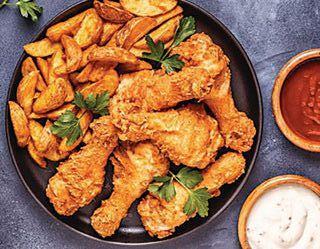
FOOD NEWS MEDIA









If I could pick a lane ( pun intended) that’s held my interest most over these past couple of years, it’s the so-called “Restaurant of the Future.” Pre-COVID, back when we were all rested, the idea of a major chain redesigning its entire model was, maybe, twice-a-year-type news. The reason was pretty simple—serious programs trailed massive price tags for operators/franchisees. So any change beyond refreshes had to carry a very clear ROI. McDonald’s back in August 2018, for instance, said it was giving its “Experience of the Future” project—perhaps known best for in-store kiosks—a $6 billion boost. And that was, without much question, one of the biggest stories for multiple years. Come 2020 into 2021, and this type of prototype drop became a near weekly headline. Every type of brand entered the fray, from Shake Shack and its drivethru entry to Chipotle’s Chipotlane-only model to Burger King even drawing up a unit where food came down a conveyor belt. In this issue, we explore the movement and what’s fueling it, and how much of it will prove reality versus fiction (page 28). Also, whether or not second-generation real estate truly provided the boon some believed it might (page 16).
For me, I find this corner of the COVID cycle to be the most alluring. So many of the changes afoot, from dual lanes in the drive-thru to pickup lockers to curbside spots powered by smart technology (to let restaurants know when guests arrive), are convenience elements consumers wanted before the crisis. But like robotics, it was one of those shifts brands constantly debated the price/payoff equation. And
it wasn’t clear. Now, given labor concerns and how the pandemic jolted guest behavior, a lot of these tech-centric updates make far more sense.


Arguably the most visible dynamic is the cutback of the dining room. We’ve all seen prototypes that shed seating in favor of a drive-thru-only box. Even socialforward Shake Shack has one in the works. This generally surfaces two sentiments from onlookers: Do guests actually want to sit in the dining room anymore? And, on the same token, is this one step too far when the dust settles? My view is taking extremes in that discussion could be misguided. There are some chains (Checkers & Rally’s and Sonic Drive-In) where the model is simply who they are. A Taco Bell adding one doesn’t mean it’s losing sight of decades of equity, however. In fact, the diversification in real estate is as much an infill play as it is a reimagining. This reality, triggered by COVID and digital-centric reactions, is going to allow brands to rethink markets they might have scratched off the map before. Chipotle can bring digital-only models into urban centers to support other locations. In other words, both sit-down and off-premises restaurants can complement one another more than cannibalize occasions. Starbucks has been doing this for some time, and it plans to dive even deeper with pickup stores nearby traditional cafes. Overall, quick-service’s new look, from fast casuals to the biggest fastfood icons, paints a future of possibility unlike anything we’ve seen. And that, in the end, might just be the lasting impact we’ve been hoping for.
Danny Klein, Editorial Director






The present and future of quick service don’t have to work against each other.


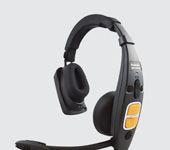



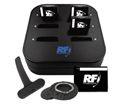










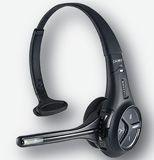
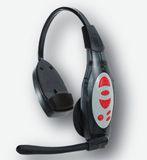






























SCHLOTZSKY’S NEWEST MENU INNOVATION arrived with star power. The brand took its homemade bread, meats, and flavors and packed them into a lineup of freshly baked-from-scratch calzones. And it found the perfect Italian ambassador to do so. From being an international pop sensation with NSYNC to a TV host and established restaurateur, Joey Fatone is well-known in many fields. The only obvious choice left? Rebrand as Joey Calzone. Schlotzsky’s and Fatone teamed up to launch the Italian-inspired option with ham, Genoa and Cotto salami, pepperoni, and mozzarella and parmesan cheeses, alongside two additional choices, including the BBQ Chicken and the French Dip. “At Schlotzsky’s, we begin each day by baking made from scratch buns, pizza dough and now calzone dough in the restaurants across the county,” says Jennifer Keil, executive chef at Schlotzsky’s. “Using the fresh ingredients and bold flavor combinations creates unique and craveable menu items, like our new calzones, that you can’t get anywhere else.”

 Joey Fatone has roots in the restaurant industry.
Joey Fatone has roots in the restaurant industry.
Schlotzsky’s used celebrity backing to introduce a fresh lineup to guests.







One of the commonly touted byproducts of the pandemic is that it increased trust between restaurants and consumers. At the least, it offered brands the chance to be there for diners when they needed them most. And it appears that resonated.
MBLM’s COVID Study, in its second year, found “Brand Intimacy” increased by 8 percent since the onset of COVID-19 for fast-food chains. Daily usage also upped 8 percent and willingness to pay 20 percent more for products and services also jumped 43 percent compared to last year’s edition.





“Despite having to shut down at some points and weather significant supply chain challenges recently, the fast-food industry has drawn consumers closer and created stronger emotional bonds over the last year,” says Mario Natarelli, managing partner, MBLM. “Brands in this industry have been able to capitalize on mobile ordering and digital drive-thru lanes during the pandemic. This has created a new reality within which fast-food brands provide even more comfort and convenience to stressed consumers—a position they can effectively continue to reference as we increasingly return to ‘normal life’ in the year ahead.”
The Brand Intimacy model measures the intensity of intimate brand relationships and is based on being a user of the brand, having a positive emotional connection with it, and performance on a series of archetypes and stages
Some other fi n
Fast food continued to perform better with men than with women, and with younger versus older consumers.
More than 32 percent of consumers reported an increased positive emotional connection with quick-service brands since MBLM’s 2020 COVID study.




Starbucks was the top brand with men, while Chick-fil-A is the top brand with women.

Overall, the fast-food industry clocked in at No. 6— the same position as the previous year (media and entertainment, automotive, retail, tech and telecom, and consumer goods were ahead). But it increased its average “Quotient Score” by 3.2 percent.











Add revenue streams with craft beverages for every daypart. Infused iced teas, avored lemonades, iced coffees and more!
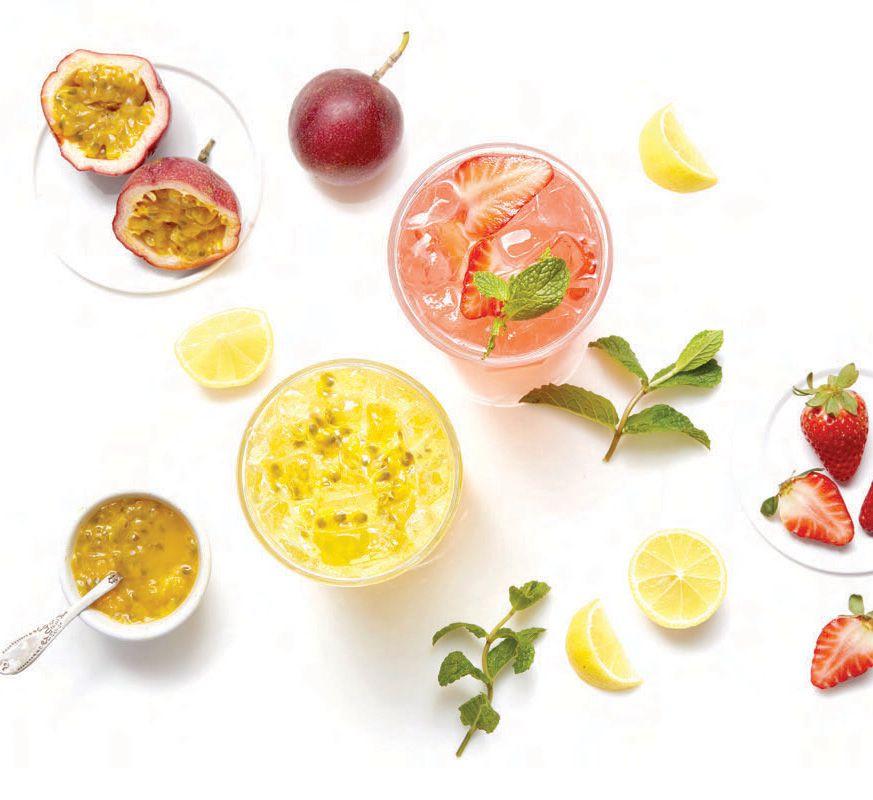
Botrista leverages easy-to-use equipment (the DrinkBot) alongside a line of ingredients (BiBs) to deliver endless choices.







Automated. Limit labor and waste
Flexible. Customized menu and recipe options

Small. Reduced footprint at 5 sq. ft.
Quick. Order to pour in just 20 sec
Intuitive. Easy to use interface

craft beverage choices without the full bar.
The burger remains one of the top-selling foods nationwide, found everywhere from fast food to gastropubs, fairgrounds, and high-end eateries.
As other products come into vogue—the fried chicken sandwich being a recent one—the burger hasn’t ceded as much ground as onlookers might believe. Just consider the fact McDonald’s serves 1 percent of the world’s population every day. That’s 68 million people, or 75 burgers sold per second.
In the year ending 2020 (when the “chicken sandwich wars” raged on), burgers were still included in 13.5 percent of all restaurant orders, which translated to 7 billion servings, according to The NPD Group. Chicken sandwiches (breaded and grilled) were featured in 6.7 percent of all restaurant orders in the U.S, which
amounted to 3.5 billion servings.
But if burgers are so ubiquitous, and good burgers at that, what keeps customers coming back?
For Smashburger, it’s staying true to what the brand does well and guarding those traits: Every burger is smashed on the grill for 10 seconds before it’s left to cook. “We tell this story almost continuously,” says Scott Johnson, chief marketing officer for the Denver-based company.
This is not only an important branding piece but also caramelizes the patty and adds flavor. “Our procedure is as important as our ingredients. We have such a unique way of cooking our burgers and that’s always going to be our bread and butter,” adds Ty Goerke, leading chef and senior manager of operations. But the
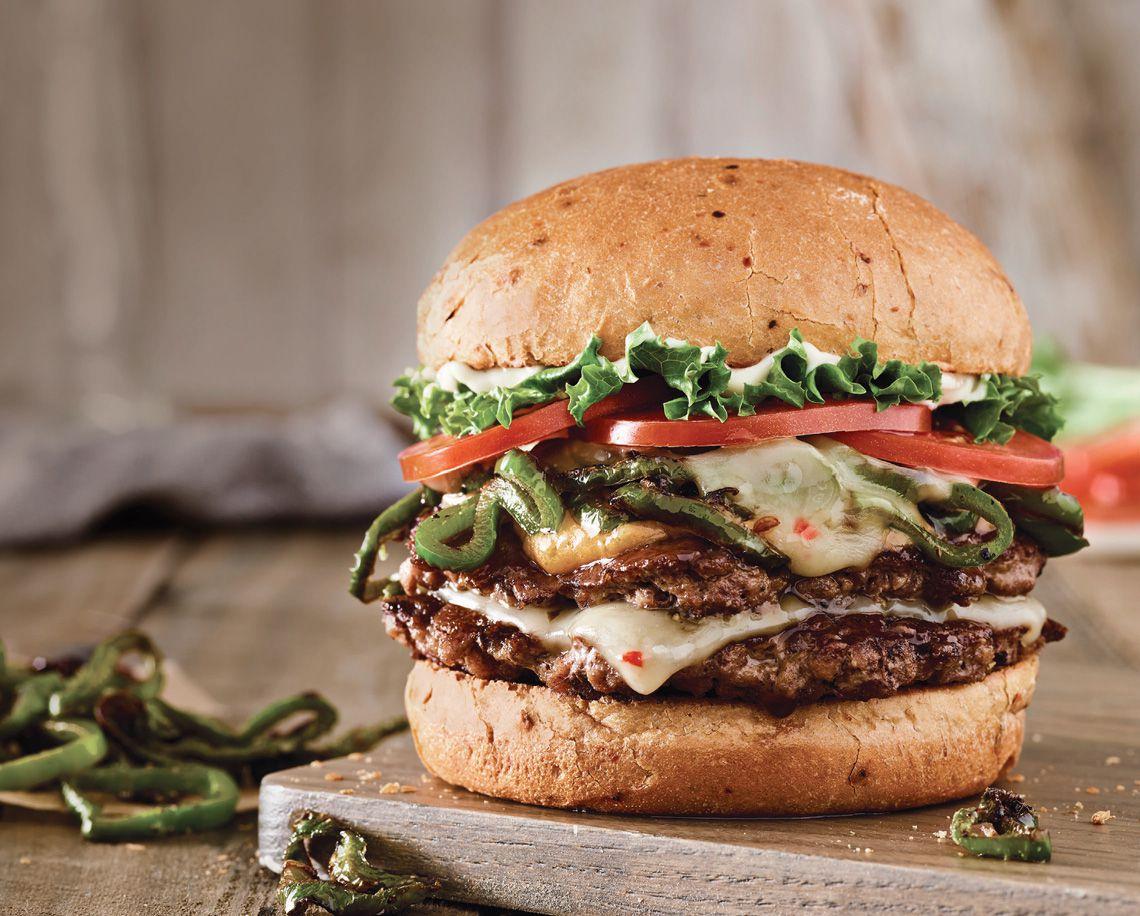
While the chicken sandwich may have grabbed headlines in recent years, the burger remains a quick-service staple that isn’t going anywhere.
brand doesn’t just rely on a cooking technique—it also focuses on quality ingredients that include 100 percent Angus beef. Everything is prepared in house, and Smashburger makes meals to-order.
As a brand, Goerke says, Smashburger must continue offering customers’ favorite burgers but also constantly think ahead. “We have to keep developing … and creating what people want.”
Burgers are so important to Hopdoddy Burger Bar that in January it purchased another burger brand, Grub, adding 18 stores to its 32, largely in new markets.
Burgers remain popular because operators can constantly rethink them, says Jeff Chandler, CEO of Austin, Texas-based Hopdoddy.
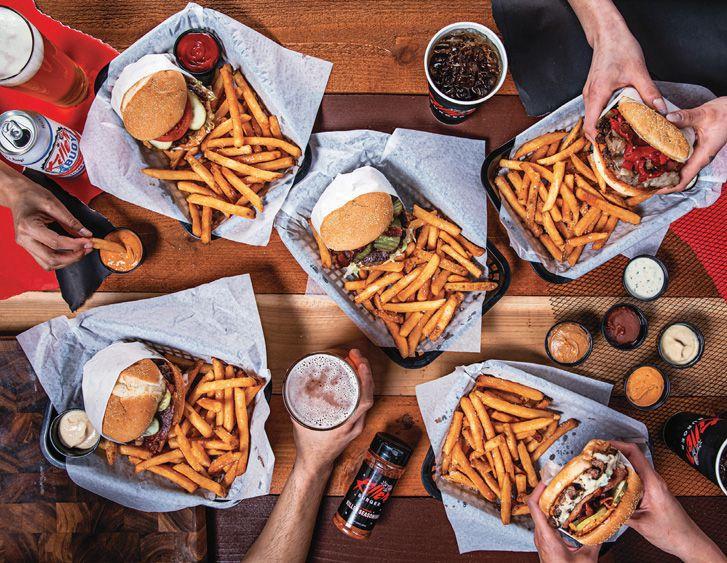
The burger, he says, “is so uniquely positioned as a food vessel because of the flavors, food builds, and customization.” Add to that, he says, “the savoriness of burgers, the juiciness of burgers. You can be dynamic with the flavors and the ingredients.” Yet at the same time, he points out, burgers are a comfort food. “We embrace this concept of doing the familiar in an unfamiliar way. That means the type of burger build but also the sourcing part of it, the cooking, and prep.”
Within Grub’s and Hopdoddy’s menus, classic burgers and slight variations of them constitute 60 percent of burger sales, though the desire for customization has gone up during COVID, Chandler says.
you are. There are so many upstarts, so much noise. There has to be a story, you have to be authentic and not try to be something you’re not, be confident in who you are.”
Killer wants every bite of its burgers to be well-thought out: For the bacon to be crisp enough to break, not bend, when it’s bitten into, and for there to be some topping in every bite.
To achieve that, it places a lead focus on ingredients. “Every bite has to be a clean bite to make sure product that goes out of the door is good enough,” Dikos says. Killer Burgers’ teams, he adds, feel empowered to let waste increase in order to produce this perfect burger—even an imperfect pickle is discarded.
There’s no ignoring the fact that while burgers remain the lead act, the prevalence of plant-based eating has shaken up traditional menus.
Smashburger is very cognizant of this trend. It’s had a black bean burger on the menu for 12 years, but it’s time to reformulate it, Goerke says. The company is now removing the cheese and egg to make it vegan. It’s also adding some vegan shake options and sides. “Even though we’re a burger company we’ll be respectful of what is going on,” he says.
Smashburger also introduced a pulled pork tailgater in late 2020. “That not only was new and interesting and brought another protein ingredient to the burger but also showcased our culinary expertise,” Johnson says. “Having burgers in a lot of different forms is where we want to go and as consumers’ tastes evolve we want to move with them.”
Hopdoddy has leaned into Beyond Meat. “We are impressed with their team and their CEO has been an awesome resource so we see being more aggressive in that arena and introducing plant-based products when and were we can,” Chandler says.
Some consumers are shifting to plantbased foods due to concern for the environment, which has led brands to commit to better sourcing practices in order to make strides toward alleviating climate change through their beef as well.
Hopdoddy changed its practices in order to become a better steward of the environment. The company only works with farmers and ranchers that commit to regenerative farming practices. And it works with companies whose core values align with Hopdoddy’s. “We commit to investing in those ranchers and suppliers who share core values with us because it needs to be a sustainable ecosystem,” Chandler says.
Killer Burger stays true to its mission of being an oasis from life “and bringing back the nostalgia of having a burger on the grill in your backyard,” says John Dikos, president and chief development officer of the Portland, Oregon-based fast casual.
“In anything you do, you’d better clarify what you do and who
“Even the most conscious brands out there that are still using beef products are thinking about it,” Dikos adds. “We’re south of 20 stores and it’s not something we’re executing today but it’s something we need to be thinking about, to just see what we can do. And the bigger we get, the more thoughtful we need to be about our impact and putting some creative solutions together.” q











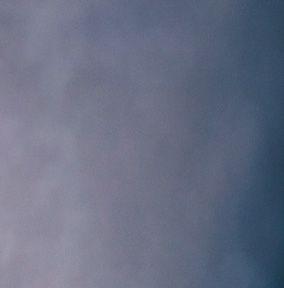

The dish that got chef Steve Chu from hot dog cart to full-fledged restaurant: Thai Chicken Meatballs. It’s got a little bit of everything – crisp mango slaw, tender, juicy chicken meatballs and of course, that phenomenal bite and texture of Cracked Black Pepper. Your Skills. Our Spices. Now that’s a potent combination. Learn more at: McCormickForChefs.com/McCormick-Culinary

TOGETHER, WE FLAVOR



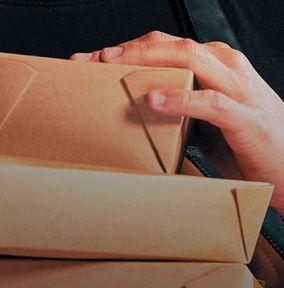
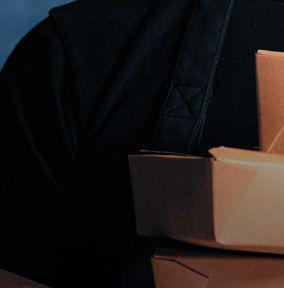


our expectations,” Wyland says. “Quite frankly, coming into this, I assumed that if we got to a 25–50 max number of units sold during that six-month period, I would have been pretty happy. I’ve been with brands that we took a year just to start the first five or 10.”
More importantly, Wyland says, RollEm-Up wants to open 50 locations this year. Much attention will be directed toward putting tools in place to ensure franchisee success.
It starts with what he calls a “deceptively simple” menu. Taquitos are built with a corn or flour tortilla, and filled with either beef, chicken, potato, cheese, or avocado. Toppings include cheese, sour cream, guacamole, and a variety of house-made dipping sauces. The taquitos come in a three or five pack, and customers can mix and match ( i.e. beef taquito with flour tortilla, potato taquito with corn tortilla)
The hero item can be paired with seven different sides—street corn, rice, beans, chips/guacamole, chips/salsa, chips/queso, and a churro doughnut.
FOUNDERS: Ryan Usrey
HEADQUARTERS: Irvine, CA
YEAR STARTED: 2019
ANNUAL SALES: AUVs at $2.1 million
TOTAL UNITS: 3 (plus 4 under construction)
ROLLEMUP TAQUITOS INITIATED ITSFRANCHISE program in May 2021 with the loftiest of goals—sell deals comprising 100 restaurants by the end of the year. The five-year plan was to reach 500.




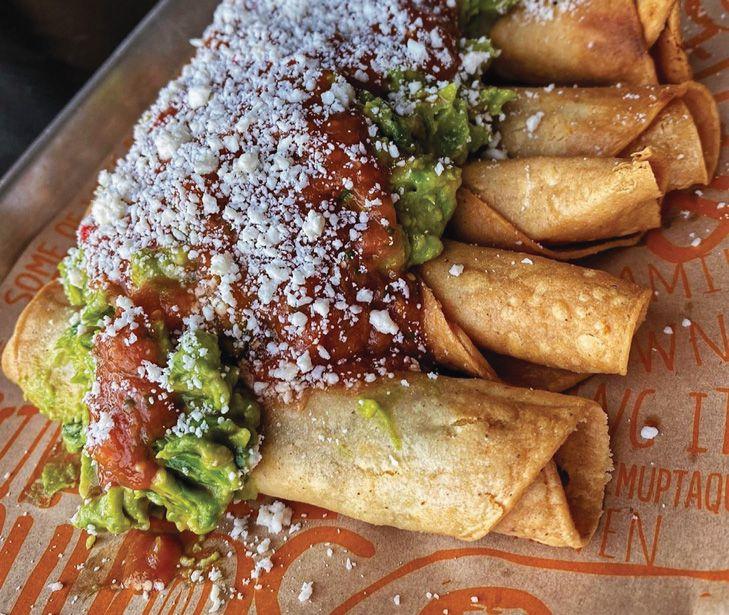
The 100-unit benchmark was far above the 40–50 range chief development officer Chris Wyland initially suggested, and that’s because of founder and CEO Ryan
Usrey, who consistently challenges him on the development side.
Wyland was more than up for it. Under his direction, the emerging fast casual reached 105 units in development by December. But the brand wasn’t finished.
Just before the curtains closed on 2021, Roll-Em-Up signed a massive, 315-unit master development deal to build stores in Texas and Oklahoma with franchisees David Weaver and Blake Terry. Counting that final agreement, the brand placed 420 restaurants under development in six months.
The new objective is to add another 500 stores to the development schedule in 2022.
“I’ve been involved in this industry for a long time and been with a lot of emerging fast-casual brands, so it absolutely exceeded
“I think what we’ve heard from a lot of our new franchisees coming in—and 95 percent of them are current multi-unit operators in the restaurant industry of other brands— the thing they really notice is how easy the operations are,” Wyland says. “And that creates low labor costs, low costs of goods, so I think that’s really a big focus. You talk to some other operators that are in brands where it’s very hard to execute their menu and do it at a cost that actually makes sense and they’re going to make money.”
To assist franchisees even further, RollEm-Up improved its digital infrastructure with five key partnerships—Olo, an online ordering platform, Punchh, a loyalty and engagement solution, Toast, a fully integrated POS system, Restaurant365, an all-in-one accounting, inventory, scheduling, payroll, and human resources


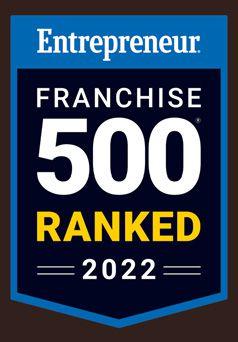

cheap,” the Fort Lauderdale-based retail specialist recalls. But while some of this occurred, “the wave of closures never came, much to the disappointment of chains that were flush with cash.”
The pandemic certainly caused damage to the dining industry. The National Restaurant Association estimates 90,000 eating establishments shuttered for good or long-term due to coronavirus setbacks. “It’s been hard to track closings caused by the pandemic separate of other business reasons,” says Association spokesperson Vanessa Sink. “The industry is still being disrupted.”
As the COVID-19 pandemic moves into its third year, an old real-estate saying seems to be easily transferrable to the limited-service restaurant industry: location, location, location.
Two years ago, as operators worried about worsening economic conditions, many experts predicted a huge shakeout that would result in a sizable number of quick-service and fast-casual closings, creating thousands of available second-generation locations.


According to thinking at the time, all these newly vacant sites would result in a depressed restaurant real estate market, which in turn would provide inexpensive growth opportunities for the strongest entities as well as lower costs for startups.
So, did this projected boom in second-generation sites occur? At this point, observers are split in their views, although the majority say the boom never happened. “Back in March, April, and May of 2020, there was a lot of talk about this flood of drive-thrus that were going to come available, and these great opportunities would be around the corner,” says Barry Wolfe, a senior managing director of national real-estate firm Marcus & Millichap.
“People thought they were going to get A-plus locations on the
Nonetheless, an annual average of 60,000 eating and drinking establishments opened and 50,000 closed for various business reasons before 2020, according to the organization’s research. Companies like McDonald’s and Dunkin’, for instance, announced plans before COVID’s spread to close hundreds of units in Walmarts and Speedway stores, respectively. Subway was struggling and closing hundreds of restaurants. Numerous operators shuttered older sites but opened others in better locations. With offices closed due to coronavirus mandates and precautionary measures, many urban core eateries did suffer. At the same time, consumers flocked to suburban and exurban limited-service units, especially those with drive-thrus. Based
The NPD Group, the number of full-service restaurants at the end of Q1 2021 slid 10.7 percent versus pre-pandemic units, but quickservice spots dipped just 3.7 percent and fast-casual stores declined only 1.5 percent. And while NPD found quick-service online and physical traffic was still off a percent at the end of 2021 compared with two years earlier, dozens of limited-service chains reported strong revenues and earnings last year.

“It speaks very positively of anything with a drive-thru, using it to survive and prosper,” Wolfe says. “These owners were also entrepreneurial and able to pivot quickly.”
Of course, as he and others note, federal and state government assistance also played a significant role in helping many restaurants stay above water. “If not for PPP [ Paycheck Protection Program], there would have been a more likely repeat of the dynamics of the [2007–2009] recession,” notes Don Fox, CEO


he labor shortage is one of the most difficult challenges facing the restaurant industry today. With management teams tasked with so much, no matter the size of their teams, reporting can become a massive time sink. The team may not have access to useful reports in the current system or may not understand how to customize them for specific needs. It can be easy to resort to sifting through undifferentiated POS data without a good grasp of what to look for—or to rely too heavily on video or transaction data alone. Small fraudulent transactions can even go unnoticed.
“With the current environment, even more so than usual, all companies—and all loss prevention or asset protection departments—are being asked to accomplish more with less. I like to refer to it as MacGyver Syndrome,” says Jeff Levitt, asset protection manager at Portillo’s, a publicly-traded chain of fast-casual restaurants (Nasdaq: PTLO).

Under this kind of pressure, quick-service and fast-casual operators and management teams need to be able to quickly prioritize and decide which events they need to address first. With their time and attention stretched to the limit, they need to monitor their locations quickly and thoroughly. Perhaps most of all, they need to be able to eliminate guesswork and focus on what matters most—protecting the bottom line.
Faced with these challenges, Portillo’s decided to integrate Envysion Restaurant Solution Suite with its POS system. Envysion’s video surveillance and loss prevention software solution ties reporting to

video verification to help clarify the unknown—and to help defeat “MacGyver Syndrome.”
“There are a lot of choices for exception reporting out there, but the Envysion product looks at true exceptions versus a preset standard,” Levitt says. “I’m able to see data that’s more actionable and that might not be flagged if we were using a preset. Envysion is always going to show me what bubbles to the top, even if that top changes.” For example, a series of voids for $35 might go unnoticed if the system was preset to flag voids over $40. Envysion is equipped to respond flexibly to what’s really happening in each location, surfacing true exceptions, such as a rash of smaller voided transactions.
“With Envysion, we’ve been able to have better visibility to address operational issues,” Levitt says. “It’s a cost-effective solution that can help us get great insights into the business. It’s also a twoway relationship and a true partnership. Not only does Envysion give us actionable data that we’d be hard-pressed to find anywhere else, but the company also listens to users’ feedback on its product and implements changes we suggest.”
Levitt keeps the Envysion app open on a separate monitor on his desk at all times. That way, he can browse and pull reports easily if he gets requests from law enforcement or a general manager. Envysion creates links to specific videos to send out to fulfill those requests, so there’s no need for Levitt to download and send large files. Aside from these quick duties, he spends about an hour a week reviewing exception reports.
“It’s all very efficient,” Levitt says. “Envysion is an important tool in the arsenal to support our business. We aren’t doing more with less; we’re doing more with more.”
Asset protection teams have stopped doing more with less— and started doing more with more. /BY KARA PHELPSPortillo’s Jeff Levitt uses the Envysion Restaurant Solution Suite to tie reporting directly to video verification.











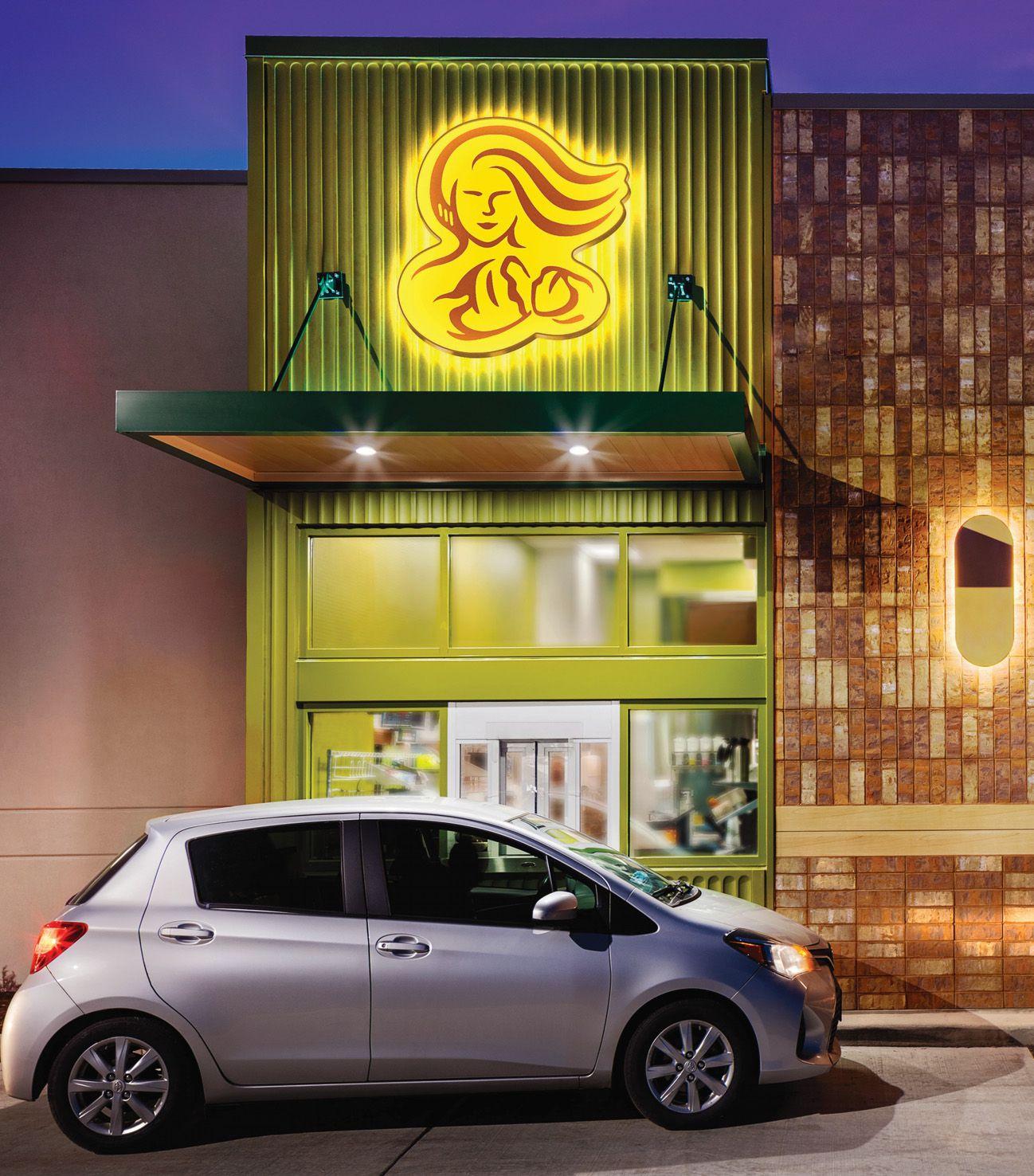




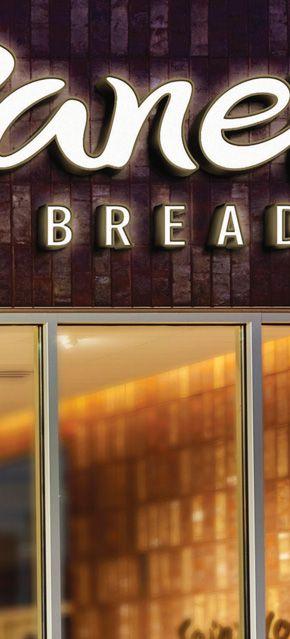

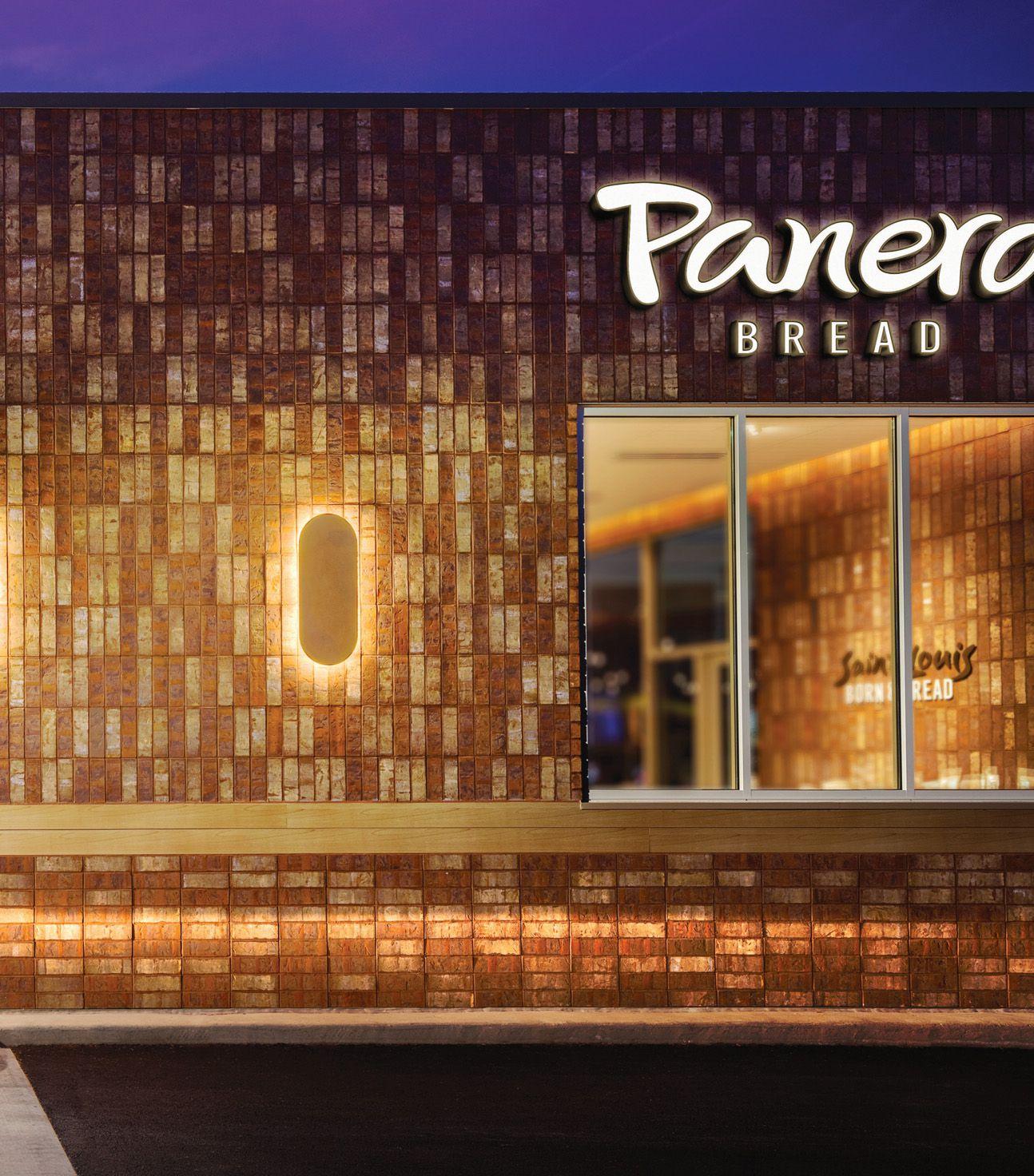
COVID-19 didn’t tell Panera a digital revolution was bubbling to the surface. ¶ Long before the pandemic flipped trends upside down, the 2,100-unit chain crossed a threshold in which offpremises began mixing more than 50 percent of its sales. Consumers had spoken, and Panera needed to ensure it had the right restaurant to embrace modernization, says Chief Development Officer Rob Sopkin, who’s been with the brand since 2018. ¶ “We recognized that we had an opportunity to update our look and feel and find the design that we felt was more forward-thinking, more focused on the craft of what Panera is, and something that we felt would simultaneously improve our business model and better meet the needs of what we were already seeing from a trend line standpoint from our customers,” he says.
/ BY BEN COLEY

The bakery-cafe started by gathering a team to work on an innovative store layout. On one side was a group of Panera’s top franchisees. The other, a cross-functional unit comprising IT, operations, engineering, human resources, and other key departments.
The kickoff meeting occurred in the winter of 2020, just weeks before COVID put the country on lockdown. But effort on the prototype never stopped, and for good reason.
“Most of the work that ultimately took place, took place during really the worst of the COVID shutdown,” Sopkin says. “The assumption already was that we had an opportunity to better meet our customers’ needs through a new box. And then this really accelerated things a little bit, and if anything, put an exclamation point on what we were already working on.”
A few months later, Panera directed attention toward a warehouse in Chicago, which held a life-sized cardboard replica of the company’s vision, from the high ceiling exterior to the full kitchen with existing equipment. The company proceeded to walk through and search for greater efficiencies. A wider corporate group was brought into Chicago in waves, as well as additional franchisees—all in an effort to retrieve as much feedback as possible.
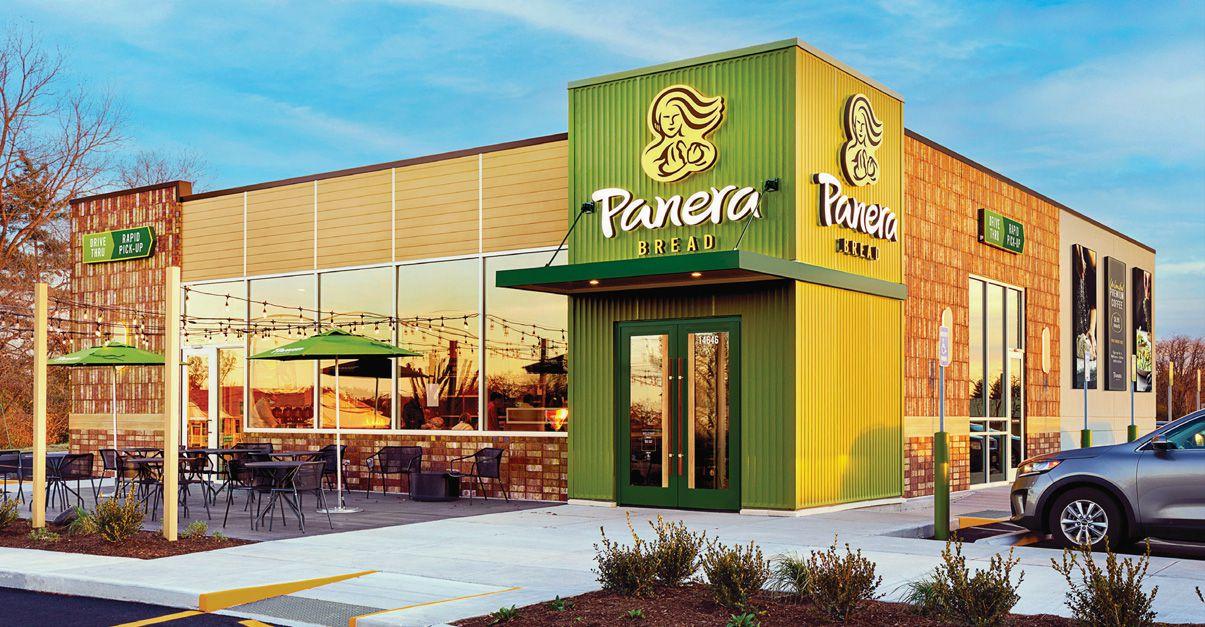
Panera ultimately landed on a 3,500-square-foot NextGen design in Ballwin, Missouri, just 7.6 miles away from its first restaurant. The fast casual brought the prototype to life in partnership with ChangeUp, a brand design agency that’s also worked with Taco Bell, Panda Express, Jimmy John’s, Nike, Cadillac, and Macy’s.
“The development of NextGen highlights how relentless we have been to satisfy the needs of not only guests, but also
our associates,” says CEO Niren Chaudhary. “Panera NextGen cafe is tech-enabled not only for our guests, but also in the back-of-house—using technology to simplify and optimize the associate experience.”
The store, which debuted in November 2021, features a double drive-thru, with one lane dedicated to mobile orders, or as the company calls it, “Rapid Pick-Up.” The enhancement lines up well with where the industry is headed. Drive-thru represented 52 percent of off-premises traffic in the year ending October 2021, and increased visits by 9 percent compared to the year-ago period and by 23 percent versus two years prior, according to The NPD Group.
Inside, customers can either wait in line, use a digital kiosk, pick up their takeout meal, or go straight to a table and use the app to order a contactless dine-in meal. Guests also have the option of pulling up curbside and waiting for a team member to bring their food and beverages. The brand first announced Panera Curbside in May 2020, which involves technology that automatically notifies restaurants when a customer arrives.
“Panera’s NextGen cafes signal our company’s vision for the future of fast-casual dining—a frictionless, tech-powered yet warm and personalized dining experience,” Chaudhary says. “It’s fully focused on taking pride in baking, our strong commitment to our food values, and continuing our leadership in technology.”
“In a post-COVID world, Panera is showing up for our guests and shifting with their ever-changing needs—whether they want to dine in or out, we have every possible option for them from rapid pick-up to delivery to curbside to contactless dine-in or drive-thru,” he adds.














When customers arrive, they’re greeted with an outdoor seating section and an updated “Mother Bread” logo that nods to Panera’s bakery legacy and its more than 30-year-old sourdough starter, says Chief Brand Officer Eduardo Luz. The insignia was refreshed to have the “Mother” directly facing customers, therefore “warmly inviting them to come break bread with us at Panera.”
The interior was developed with customer wayfinding in mind. The restaurant includes a pickup area near the door so to-go guests can enter/exit seamlessly without moving farther into the cafe and creating additional congestion.
“We were thinking about the efficiency of the entire experience for the customer and really at every single touch point that became the foundation of what we were trying to get accomplished,” Sopkin says. “We wanted this to be a more intuitive experience for our guests so that they fundamentally understand what the customer journey is, where they’re ordering, and how this flows, where they’re picking up there drinks. Take any of the guess work or confusion out of that.”
Placing an off-premises section near the entrance also signifies a shift in how Panera approaches delivery, Sopkin says. The chain built its own fleet of drivers in the years leading up to the pandemic, but the fast casual since moved toward an outsourced method. A little more than six months into the pandemic, delivery sales were up 100 percent, or more, depending on the market.
“We saw a pretty significant acceleration in that business overall as more and more people were migrating to the thirdparty delivery platforms,” Sopkin says. “Between the sales going up and then also changing the model and going to third party, that affected our design.”
Another goal, Sopkin notes, was to showcase what Panera was founded on—baking and fresh bread. An overhanging mirror reflects a multitude of treats, and bakery ovens and tables are in full view. In prior iterations, the process was more of a back-of-house discussion, but now, Sopkin says little is left to the imagination and baking has moved to the “heart of the experience.”
Although the restaurant industry is accelerating toward an off-premises-dependent world, Luz says, customers still value Panera’s dine-in atmosphere that “delights all their senses.”

“Our guests use our cafes as an extension of their own homes,” Luz says. “They cozily enjoy their meals by our fireplace. They love to watch our bakers create deliciousness right in front of their eyes and sample the latest creations. And of course, the aroma of freshly baked bread, straight from the oven, keeps our guests wanting to come back for more. The NextGen cafes incorporate all these rich dine-in experiences.”
For the back of house, the restaurant experimented with different layouts, but eventually opted for an integrated line, meaning food and beverages are produced in a centralized spot, regardless of how the customer orders.
The choice reduces labor costs and proved to be a more intuitive process for employees, Sopkin says. The size of the prototype can flex upward or downward depending on real estate, but in every box, the kitchen remains the same square footage; only the front of house and dining room seating changes.
In terms of drive-thru, Panera chose digital menuboards to ease friction and add a layer of engagement. Through geo-fencing technology, the restaurant is able to automatically pinpoint a MyPanera loyalty member when they arrive at the cafe. Once identified, the customer is greeted by name, and their experience becomes highly personalized.

For instance, consumers can easily re-order past favorites and Panera can leverage known preferences to offer recommendations and tips for better menu matches. In August, the fast casual reported 45 percent of sales were e-commerce, and its loyalty program comprised 44 million users.
During the pandemic, Panera’s pivot to more off-premises and digital orders was fueled by new deals like its MyPanera+ Coffee subscription program, which offers unlimited iced and hot coffee and hot tea for $8.99 per month—any size, any flavor, and redeemable every two hours. The company also debuted Flatbread Pizza, a portable food segment that saw record-breaking sales when dining rooms were restricted.
“Panera’s guests are very discerning,” Luz says. “They love delicious, chef-curated food that tastes amazing because it only uses the best ingredients. They also want omni-channel convenience as they live busy lives and don’t want to waste time.”
“With NextGen, we are making all these Panera traits even stronger, which in turn will further differentiate our experience,” he continues. “We believe that over time, this differentiation will continue to attract new guests, while we retain and delight

the already loyal ones.”
The DNA of the design will be represented in all Panera restaurants going forward, except for a handful of units that were conceptualized prior to the fast casual landing on its prototype. Sopkin says there may be some instances in which the company cannot implement a dual-lane drive-thru, but if the site works and it’s the right trade area, it is willing to move forward with a traditional drive-thru. Sopkin says the company saw double drive-thru sites enter the pipeline about 65 percent of the time.

Some elements, such as the exterior signage, fluted green tower, and frontal view of the bakery will also carry over to existing stores as part of the company’s remodel program.
The NextGen store in Missouri is about 20 percent smaller than Panera’s most recent standard prototype. Previously, locations required a $1.5 million to build, but the latest design is closer to $1.3 million.
“There’s a lot of noise and construction costs right now in terms of inflation and different things that are going on in supply chain,” Sopkin says. “But for the next year out forecasting, we’re going to be able to achieve our new store cost around that $1.3 million number.”
“That’s what it does do is allow us to get into some of the tighter, smaller footprints at 3,500 square feet,” he adds. “And there were certainly instances where finding a 4,500-squarefoot cafe with a drive-thru didn’t fit on certain site zones. So it actually gives us increased flexibility to get into more locations.”
Panera’s new restaurant is part of a significant transition in the fast casual’s history. In August, the bakery-cafe chain announced it was uniting with sister concepts Caribou Coffee and Einstein Bros. Bagels to form Panera Brands. Combined, the group encompasses nearly 4,000 locations and 110,000 employees in 10 countries, making it one of the industry’s larg-
est fast-casual platforms.
Chaudhary says the goal is to leverage core competencies and the scale of Panera—such as its digital program and expansive franchise model—to turbocharge growth of Caribou and Einstein Bros. Each restaurant is owned by German conglomerate JAB Holding, which purchased Panera for $7.5 billion in 2017, Caribou for $340 million in 2012, and Einstein Noah Restaurant Group for $374 million in 2014.
Then in November, Panera Brands revealed plans to go public with the assistance of restaurateur Danny Meyer and his special purpose acquisition company Union Square Hospitality Group Corp. “It’s a portfolio of complementary brands that are stronger together, bound by common values and each are well-positioned for growth,” Chaudhary says. “Together, the three brands form a powerhouse platform with common values and shared belief that we can be force multipliers for good. Panera Bread as the leader in food you feel good about eating, Caribou Coffee as a leader in delicious coffee, and Einstein Bros Bagels as a leader in craveable breakfast.”
As for Panera’s upcoming development plans, Sopkin can’t get into specifics because of the impending IPO, but he does feel bullish about both corporate and franchise growth, which each make up about 50 percent of the footprint.
The chain is energized by NextGen and drive-thru potential in suburbs, and also rethinking what the new era means for urban and nontraditional environments.
“We see our customers are excited about us in any of these environments, whether it’s urban or suburban, and what we’re trying to do is meet them where they want to be met,” Sopkin says. q
 Ben Coley is Food News Media’s content editor. He can be reached at ben@QSRmagazine.com
Ben Coley is Food News Media’s content editor. He can be reached at ben@QSRmagazine.com






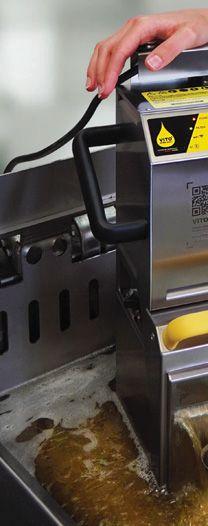
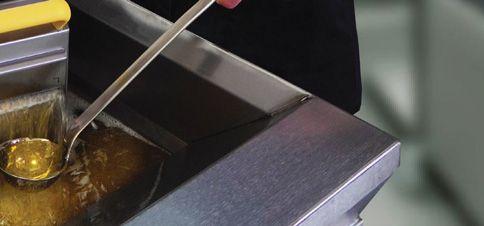


















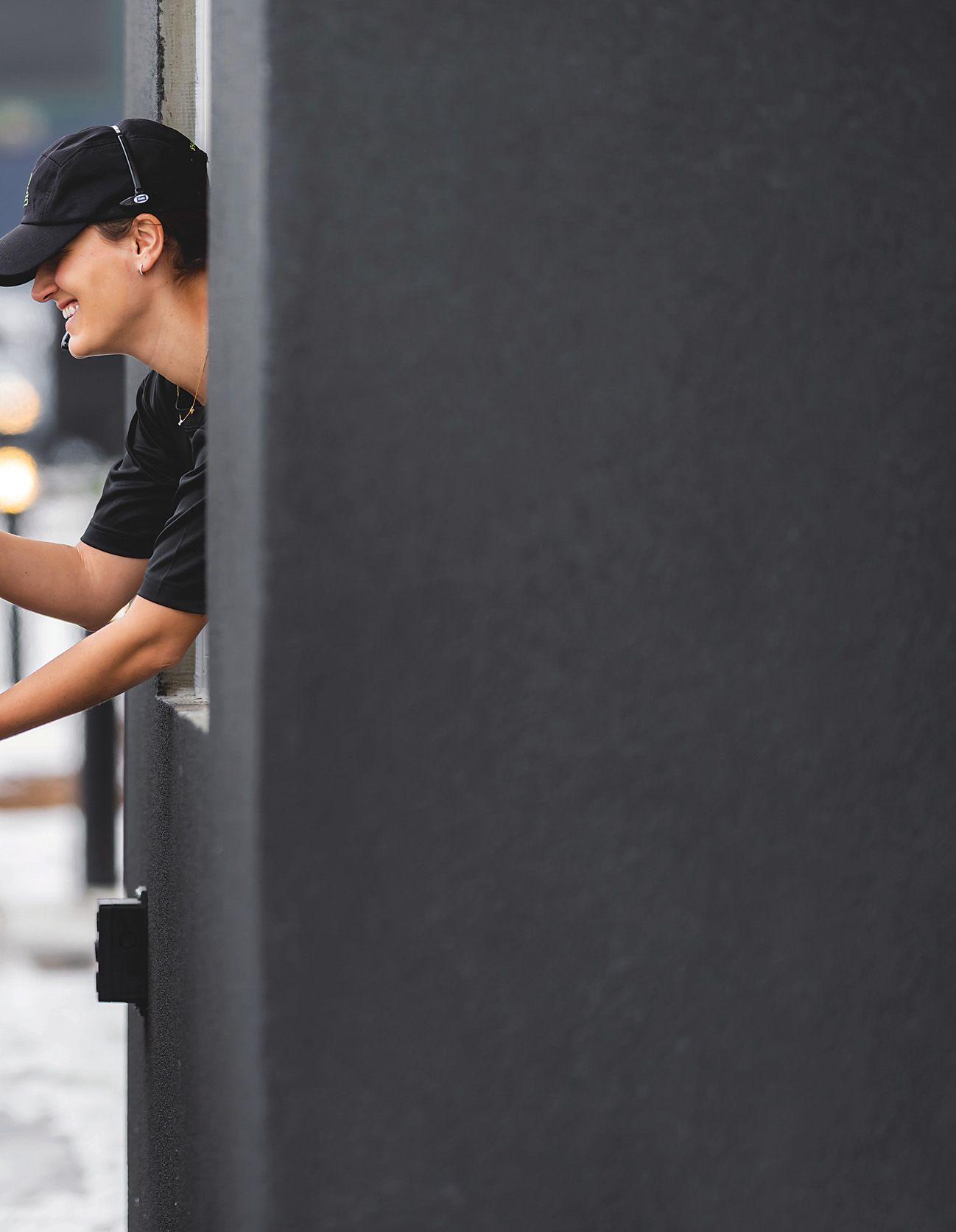
The Nolensville Hardee’s serves as a prelude to bigger changes afoot at CKE. In next-generation store designs from the Tennessee-based restaurant enterprise, Walls teases multiple drive-thru lanes, a walk-up window devoted to third-party delivery, and a redesigned kitchen focused on optimization with new equipment, technology, and layout considerations.
“As guests become savvier and there are more options available, it’s more important than ever to listen to their voice,” says Walls, CKE’s global chief development officer. “We had to stop the way we were developing to best meet guest expectations.”
And CKE is far from alone.
Across the U.S., quick-service brands are aggressively altering store designs to accommodate shifting consumer preferences, so many powered by the COVID-19 pandemic. In TD Bank’s 2021 Restaurant Franchise Pulse survey released earlier this year, 55 percent of restaurant operators said they planned to add more space for pickup orders, while 45 percent were plotting additional drive-thru locations, and another 43 percent were looking to add outdoor dining space. Those figures underscore the fast-changing world of restaurant design.
As quick-service brands hustle to fulfill guest demand for contemporary, convenient, and safe experiences, store models are evolving at a rapid pace. To capture results and ensure longterm viability, today’s restaurant prototypes are imaginative, progressive, and forward-thinking concoctions incorporating once-unthinkable elements, such as interiors eschewing dine-in capabilities, drive thru-only stores, and triple-lane drive thrus.
“No customer, no revenue,” says Sam Ballas, founder and CEO of North Carolina-based East Coast Wings & Grill. “You either figure out how to shift your lens or you miss out.”
Above all, the quick-service restaurant of the future is smaller. With lingering anxieties about dining in and a surge in off-premises orders, quick serves are slicing their traditional footprints to accommodate new and projected realities.
“We don’t need to build a 4,000-square-foot restaurant in an area in which we’re doing 95 percent drive-thru business,” CKE’s Walls says.

Smaller stores generally reduce construction time and expenses before shrinking occupancy costs. This positions brands, especially franchised concepts, to capture a lower investment cost while heightening ROI potential.
The conventional store at upstart Florida-based chain Chick’nCone covered some 1,200 square feet and featured about two dozen seats and an exhibition kitchen—the aptly named waffle theatre. Today, the brand touts a new 360-square foot shipping container prototype entirely devoted to off-premises traffic with a walk-up window and drive-thru lane. Two such units are already operating in Dubai, while the chain’s first such domestic unit will open this summer.
Compared to the company’s conventional restaurant design, Chick’nCone CEO Jonathan Almanzar says this new prototype slices upward of 40 percent off the costs and time needed to open the unit.
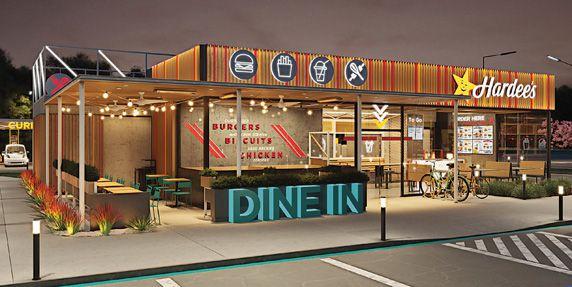
“You can’t argue with those numbers,” he says.
Mexican chain QDOBA, meanwhile, historically favored units of 2,400–2,600 square feet. With its new store prototype, however, it is reducing square footage about 20 percent to 2,000–2,200 square feet.
Notably, the push toward smaller-format concepts focused on off-premises orders is also being adopted by traditional full-service restaurant brands as well, which injects added competition into the quick-service marketplace. TGI Fridays’ “Fridays on the Fly,” for instance, is a 2,500-square-foot space with limited indoor dining and a hefty focus on processing takeout and delivery orders. Full-service giants like IHOP and Buffalo Wild Wings have similarly unveiled prototypes with reduced store footprints as has Ballas’ East Coast Wings. From the 4,500-square foot box it once inhabited, East Coast Wings now features a 2,100-square foot space with fast casuallike elements such as counter ordering.



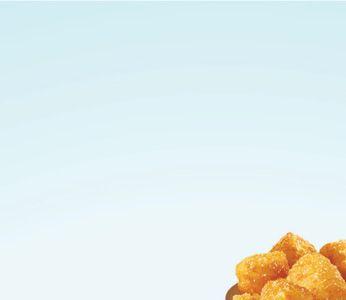










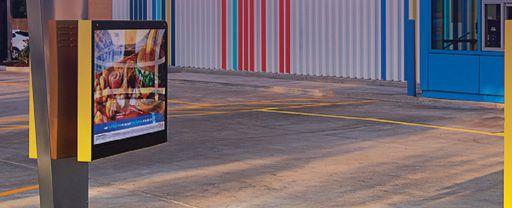





See




















“The smaller box size equals a reduced investment without a significant falloff in revenue,” Ballas says.

For years, fast-casual concepts like Panera and Starbucks fashioned themselves as a “third place”—a venue in which individuals could chill beyond their home or office. Many quick-service restaurants in small towns similarly celebrated their status as a hang-out spot.
The pandemic, however, battered the “third place” notion and prompted restaurant brands to question the need for indoor dining. Deloitte U.S. restaurant and food service leader Jean Chick says restaurant quick-service dining rooms are going to shrink and, in some cases, disappear.
“I wouldn’t be surprised if we see more and more quick serves close dining rooms altogether and move entirely to drive-thru and pickup-only footprints that offer the ultimate in convenience,” Chick says.
Indeed, prominent brands like McDonald’s, El Pollo Loco, and Jack in the Box have all unveiled prototypes reducing, if not wholly eliminating, indoor seating.
With Chick’nCone’s to-go and online ordering up 300 percent in 2021 and dine-in traffic trailing off, Almanzar says the value of a dining room declined, which is why his brand’s new prototype ditches indoor seating in favor of a walk-up window and drive-thru. Yet more, eliminating the dining room allows the growing chain to be more efficient with its human capital, thereby addressing another pesky challenge in the restaurant space.
“It makes more sense to remove the dining room element and focus on the kitchen,” Almanzar says.
Many brands, however, are offer-








ing a compromise to those who still want to dine on-site or hold anxieties about inside dining by delivering outdoor patios. Prototype renderings from the likes of KFC, Sweetgreen, Smashburger, and Pokeworks all include extensive patio seating.
In today’s quick-service environment, a drive-thru is a virtual necessity to accommodate guest demand for convenience and safety. It’s why so many brands that went years without drivethru restaurants—Shake Shack, Chipotle, and Sweetgreen among them—are racing to service vehicle-bound customers.
At the minimum, a single drive-thru lane is key, though recently unveiled quick-service prototypes are reaching beyond that standard with additional lanes designed to reduce wait time and accommodate delivery orders as well as digital purchases.
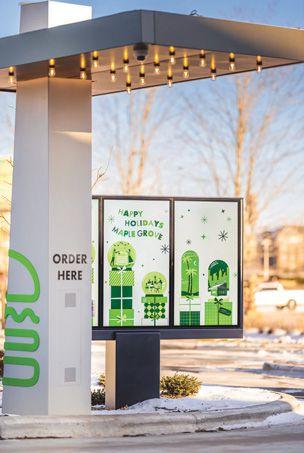
As Jack in the Box saw its drive-thru sales skyrocket throughout 2020 and into 2021, the brand crafted plans for a drive-thru-only prototype. Alongside more storage capacity and dual-assembly kitchens to accommodate off-premises sales, Jack in the Box’s MK12 prototype includes two drivethru lanes: a traditional lane outfitted with digital menuboards, LED lights, and overhead canopies, and a second dedicated to fulfilling online pickup and third-party delivery. The first two MK12 locations will open later this year in California and Oklahoma, says Jack in the Box chief franchise and corporate development officer Tim Linderman.
Similarly, Taco Bell’s “Go Mobile” prototype devotes a lane to mobile orders while Shake Shack’s design shows three lanes—two allotted to the conventional drive-thru customer and a third earmarked for app pickup and delivery orders.


As many Hardee’s and Carl’s Jr. stores capture 80–90 percent of their sales via the drive-thru, CKE is assigning more real estate to drive-thru operations. The brand’s latest pro-
 KFC’S NEXT-GEN DESIGN DIVES INTO THE DUAL-LANE TREND.
KFC’S NEXT-GEN DESIGN DIVES INTO THE DUAL-LANE TREND.

Don’t let supply chain issues slow you down. We are fully stocked and ready to deliver!
6 MODELS TO FIT YOUR KITCHEN!
SAFE COUNTERTOP FRYER OIL DISPOSAL HAS ALWAYS BEEN AN ISSUE—WE ARE YOUR SOLUTION!
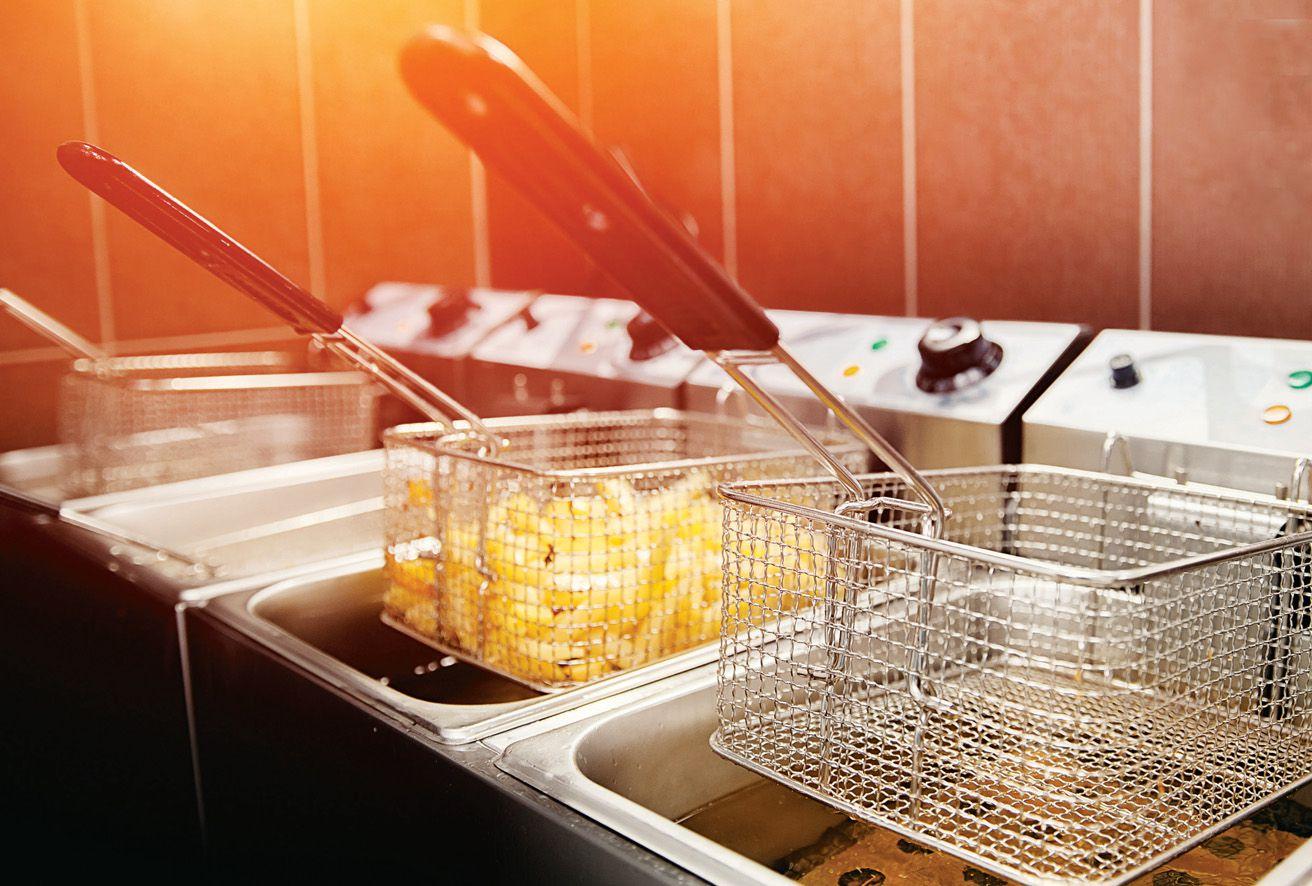
THE ISSUE: Safe fryer oil disposal.
THE SOLUTION: The Shortening Shuttles® allow you to safely and easily transport hot oil to the dumpster.


THE ISSUE: Limited space for necessary equipment.
THE SOLUTION: Small foot print of 14" x 19" x 37" tall. Generous capacity of 5.5 gallons. The new SS-645 MINI FITS!
THE ISSUE: Quality. There is so much junk out there folks are reluctant to buy ‘more junk.’
THE SOLUTION: 30+ experienced industry provider of PROVEN quality equipment.
+Menus might be shrinking, but comfort food is sticking around.
Worcester Industrial Products
SAFE WASTE OIL TRANSPORT
totype features two distinct lanes for ordering and delivering food to the guest—“a true double drivethru,” Walls calls it. Both lanes act like a traditional drive-thru while a gate system enables team members to safely deliver food by hand to guests in the outer lane.
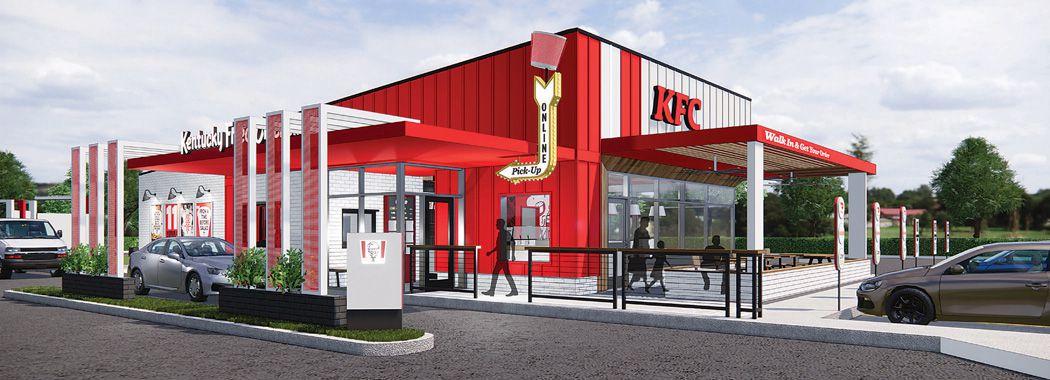
“In this way, we’re not getting that bottleneck when two lanes converge into one,” Walls says.
While CKE explored conveyance systems for food delivery—something many others continue investigating, CKE leaders didn’t feel the technology fully addressed large orders and food safety concerns. Yet more, Walls says, the cost-effective gate design enables the brand to provide an important touch of human hospitality as a counter to machines and technology.
And though guests may never leave their cars and step into the restaurant, consumers nevertheless desire transparency and a little experiential flair. Leaning heavily into windows rather than brick walls, prototypes from the likes of Smashburger and Burger King make kitchen operations visible to vehicles in the drive-thru.
With so many restaurant concepts, not to mention retail players like grocery and C-stores, fighting for share of stomach, quickservice brands are turning to new store prototypes to elevate the guest experience in contemporary ways and distinguish themselves from the competition.
Many are accomplishing this by leaning even deeper into technology that ensures a modern customer-facing experience or streamlines back-of-the-house operations. As one example, QDOBA’s new store design includes both interior and exterior digital menuboards. This not only allows QDOBA store leadership to easily make real-time pricing adjustments and promote new offerings, but also improves order accuracy with order confirmation.
“It’s a more fluid way to connect with customers,” QDOBA chief development officer Jim Sullivan says of the digital
menuboards. “This is where we need to be today and it will continue to evolve.”
While the front of the house might differ in CKE’s newest restaurants, Walls says kitchen operations will be the same from store to store and embrace innovations like self-filtering fry vats and drink automation in the drive-thru. This uniformity, he continues, will ensure more efficient operational flow, standardize back-of-the-house training, and allow employees to move between stores.
Beyond technological integrations intended to enhance the guest experience, many quick-service brands are also unveiling prototypes with eye-catching exterior designs, a strategic move to capture attention and entice visits.
Chick’nCone’s new prototype consists of one shipping container stacked on top of the other. While the restaurant’s orange-colored lower level is dedicated entirely to kitchen flow and storage, the top container places the brand’s oversized orange logo and the words “Drive-Thru Here” against a white backdrop.

Other brands are turning to vibrant exteriors, too, ranging from the red and white stripes on the KFC prototype to the gradient sun-colored signage towering above El Pollo Loco’s latest store design. Meanwhile, Jack in the Box’s MK12 prototype includes signature red branding panels that turn purple at night to cajole late-night visits.
The move toward bold exterior designs comes with a stillimportant focus on sustainable materials and environmentally friendly choices. Chick’nCone’s prototype reuses shipping containers while bold prototypes from both Burger King and Sweetgreen incorporate solar-powered roofs.
“With more and more options in a competitive space, you need to make a statement with something modern and clean that also makes people feel good,” Chick’nCone’s Almanzar says. “The restaurant of the future can’t rely on any tired formula.” q
Daniel P. Smith is a regular contributor to Food News Media and is based in Chicago. WHETHER PICKUP, DINE-IN, OR DRIVE-THRU, KFC WILL HAVE BUILDS FOR EVERY DEMAND.




The chief marketing officer’s role at a quick-service brand is always shifting. But the pandemic hastened evolution up and down the C-suite of concepts nationwide.
Many patrons suddenly wanted to spend less time dining in, and more on picking up, getting delivery, and ordering via drive-thru windows and mobile apps to minimize contact. So the task sheet of the CMO boiled down to reaching guests despite guidelines that, in many cases, did everything possible to keep people apart.
Danielle Porto Parra, SVP of category marketing at Focus Brands, who oversees three of the company’s brands—McAlister’s Deli, Schlotzsky’s, and Moe’s Southwestern Grill—says introducing more analytic-driven marketing, coupled with digital platforms, transformed Focus’ ability to communicate in recent years. Her main aim today? Asking, “What can your business do to add value to your customer’s life?”
Is the marketing world more or less connected thanks to COVID? It depends on how you approach it.

The pandemic altered dining habits, increasingly toward digital, Parra says. “Customers,” she explains, “want to use multiple channels based on what’s most convenient, including delivery through our app for a family’s weeknight meal and coming back to dine at lunch.”
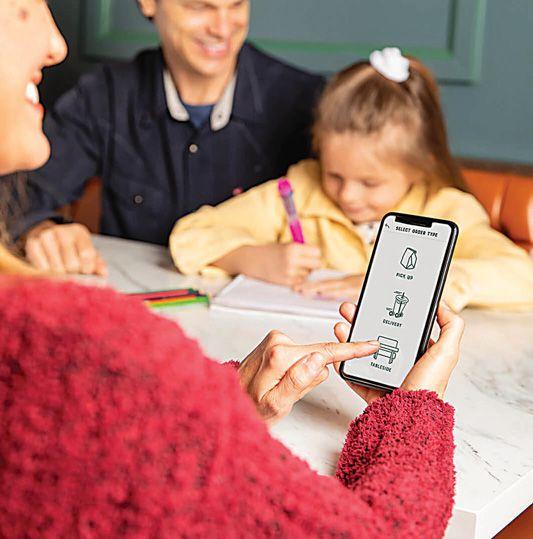
Parra sees the biggest change during COVID as an increasingly prevalent number of customers engaging with digital technology, which led to one of the biggest alterations at Focus from a marketing spin: the goal of reaching users on a one-toone basis.
“We’re able to provide the right offer to the right customer at the right time,” Parra says.
For instance, loyalty patterns today can reveal whether a brand is dealing with a mom who is feeding her family. That
can trigger an offer for a free kid’s meal. Or a business traveler who regularly stops in for lunch, which then amounts to a free side of guacamole or dessert.
Moreover, via loyal users, Focus’ marketing department tests free offerings and promotions to determine whether there’s ample or minimal interest, to either sustain or drop it.
Digital traffic and loyalty also enable Focus to get to know each consumer’s tastes and dining preferences. McAlister’s users at its 507 locations earn loyalty points for either a free kid’s meal or free entrée. They can also add a bread bowl with their soup order or become subscribers of a tea pass lasting a month for $7, entitling them to a complimentary daily tea.
Staying a step ahead of the customer during a pandemic is critical, Parra says. At McAlister’s, the fast casual introduced tableside dining where guests don’t have to go to the register to place an order. They sit down at a table, order their meal on their app, and wait for food to be brought out. Customers “pay a fast-casual price, but you’re getting a full meal with waiter service and drink refills,” Parra says.

Focus can target promotions using its repertoire of brands, including Carvel, Cinnabon, Auntie Anne’s, and Jamba to crossappeal to loyal customers. Schlotzsky’s loyalists, in one instance,

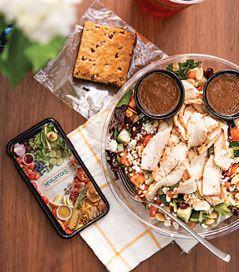

BETTER QUALITY FOOD
Less moisture lost in cooking process gives more succulent food and 50% less shrinkage than standard charbroiler

CALCULATE SAVINGS
Our easy to use calculator
Garland XHP Broiler could save you. Try it out! Scan QR code:
ENERGY SAVINGS
Patented gas burner
SAFE AND EASY TO USE to turn on. Flame failure

were offered two large Cinnabons for $5. Parra calls it a win/win because “we’re giving customers a reason to come back more frequently. We don’t want it to only be transactional.”
Additionally, customers are sent social media messages on Facebook, TikTok, and Instagram. To break through the clutter, McAlister’s introduced a contest where loyalists created their own spud images. A random drawing produced a winner that earned a free trip to an Airbnb in Idaho— a major potato supplier.
Asked how Parra expects business will shift when (and if ) the pandemic ever fades, she says, “One thing that won’t change is the adoption of digital messages and people wanting more choices. The pandemic helped accelerate that, but it won’t go away because they want the choices and personalized offerings.”
Ryan Ostrom, marketing chief at Jack in the Box, says the pandemic “expedited what CMOs are doing. It’s more than marketing, but understanding the guest’s journey and how the brand engages with the guest through digital, online, and social by providing the solution that the guest wants.” It all rolls back to age-old pillars: ease, affordability, and convenience.
Convenience, in particular, is what customers demand these days, Ostrom says. Is the drive-thru speedy enough? If the customer orders delivery, can it take 2 minutes to order? What role does marketing play in all of that?
Everything Ostrom does as CMO is geared toward making the customer’s life easier—how quick can a guest purchase on his/her app, and how can he equip franchisees to remove friction throughout the process?

If everyone is accelerating the pace of ordering via mobile, where do you stand out? Ostrom says Jack in the Box carved out a reputation as a “late-night brand,” so it leans into that equity. “We target the after-party and late-night crowd, for delivery, ordering for multiple people and when guests want a tacos or burger,” Ostrom says.
The brand’s Jack App enables its CMO and staff to know if someone is a late-night or breakfast customer, and can help identify if they want to stretch their time spent at Jack in the Box.
Marketing via streaming services such as TikTok was another change. “We are now majority digital in marketing,” Ostrom says. The chain uses the acronym “CRAVED,” meaning cultural, relevant, authentic, visible, easy and distinctive, to determine if its marketing offerings are targeted effectively.
At 770-unit chicken chain Bojangles, “convenience is here to stay and that involves making sure we have the right digital

means to access them, and the right digital tools available to our crew members,” says CMO Jackie Woodward.
About two years ago, Bojangles stepped up its focus on breakfast and dinner. But the pandemic forced it to “rebalance our marketing around drive-thru and delivery, and that has really paid off,” Woodward says.
Drive-thru became a spotlight since many of Bojangles’ clientele are essential workers who look for no-frills dining that fits their busy lifestyles.
Because of its Southern roots, breakfast was always a “hallmark of our business, where people dine on eggs, sausage, country ham, biscuit and our legendary iced tea,” Woodward says.
When Bojangles introduced its fried chicken sandwich, it orchestrated a giveaway publicity event out of a food truck around Times Square. “It gave us billions of impressions from a customer standpoint, and introduced Bojangles to a whole new crop of customers and brought a taste of home to many exiled Southerners,” she says.
Though Woodward has no crystal ball on the future, she’s emphatic “convenience is here to stay.” She says the launch of Bojangles’ app was crucial because it enables the brand to talk to its customers and personalize their experience.
It’s a sentiment shared by Wendy’s CMO Carl Loredo. “The changing meal routines challenged us to get creative with our marketing efforts, and think through how and when, we reach our customers,” he says.
Amid COVID, the burger giant adjusted messaging “and revisited our tools to intercept customers in their new ‘normal,’” Loredo adds.
As Wendy’s saw the culture of delivery and convenience accelerate, it moved from one delivery partner to four, launched rewards, introduced curbside and scheduled pickup, and rolled out in-app delivery in 2021 to bring food to customers’ doorsteps. Another critical target was to speed up drive-thru times and offer accelerated pickup options.
Too many of Wendy’s competitors, Loredo says, were serving “folded egg sandwiches, flavorless chicken sandwiches, and stale bagels.” So delivering food hot and tasty became the byword at Wendy’s. What does Loredo envision over the course of 2022, despite so much upheaval over a persistent pandemic? Regardless of how and where the message comes from, Wendy’s will remain “committed to building our breakfast and digital businesses. So fans can expect to see more craveable items hitting our menu,” he says. q
Gary Stern is a regular contributor to Food News Media and is based in New York City. RYAN OSTROM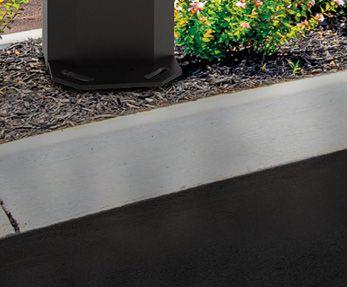
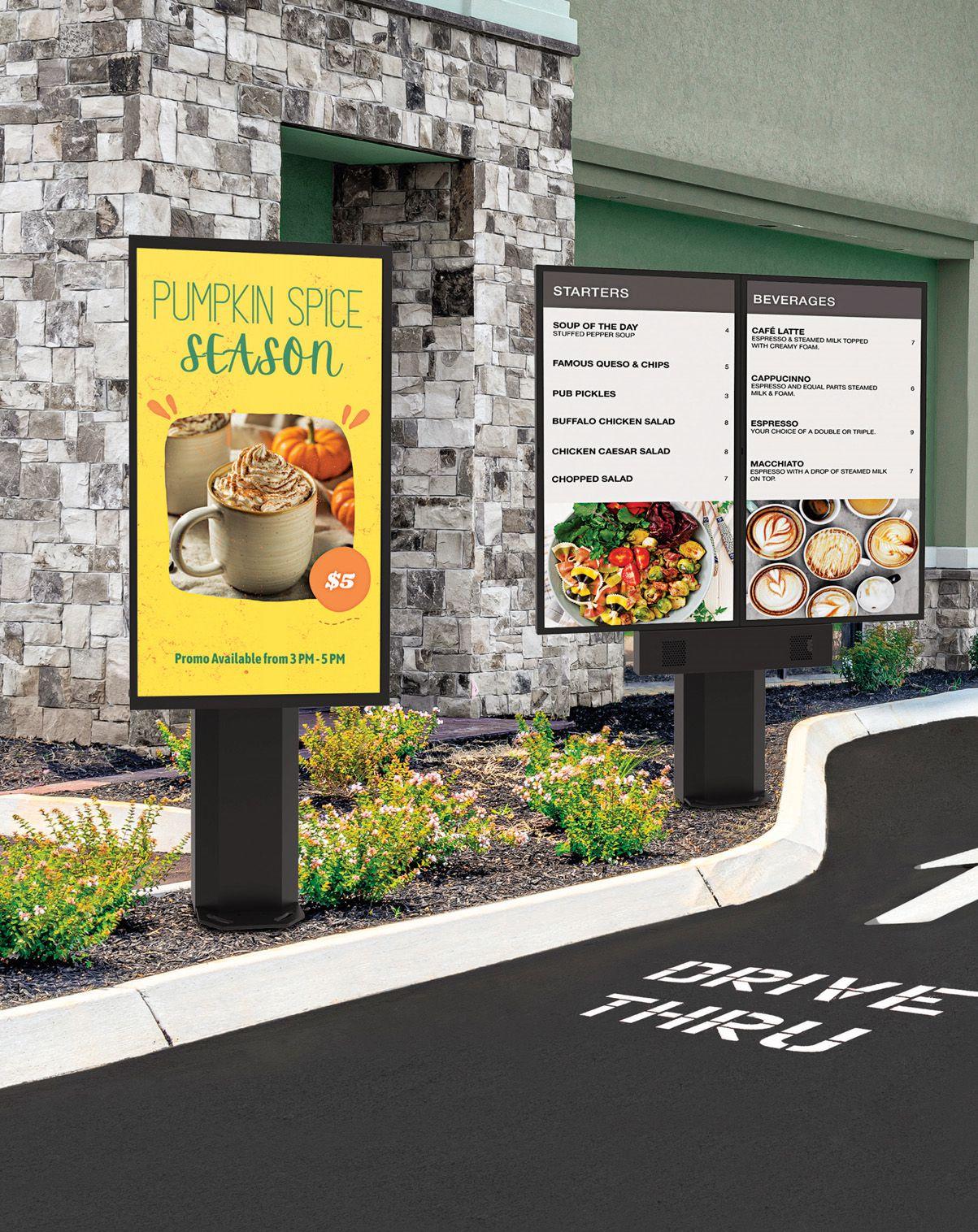
The new technology helping brands solve offpremises challenges.













 BY DAVINA VAN BUREN
BY DAVINA VAN BUREN
When COVID-19 hammered the restaurant industry, drive thru windows saved the day. In many cases, drive-thru lanes became the sole source of revenue for quick-service restaurant chains.

While this ultimately kept restaurants in business with dining rooms closed, the lines, order errors, and overall customer dissatisfaction during the initial adjusthad to evolve quickly in order to keep up with new regulations and challenges brought on by the pandemic, but something else—something bigger—also hap-
for customer service.
“It’s no longer just about serving cus-ciently, but it’s also about meeting servicepoint,” says Paul Foley, president of HME Hospitality & Specialty Communications.
Historically, the restaurant industry lagged far behind others in terms of technology adoption. COVID forced quick-service restaurant operators to rethink customer-facing and operations technologies, pivoting toward reliance on the drive thru while also embracing more delivery options, investing in automation, and reducing human interaction.
and adoption of technology in the drivehead of hardware design and engineering at Coates Grouption is designed to combat increased wait times, deliver against competing ordering methods, facilitate the rise of mobile loy-






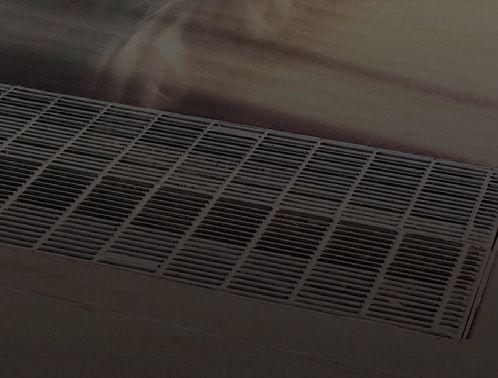

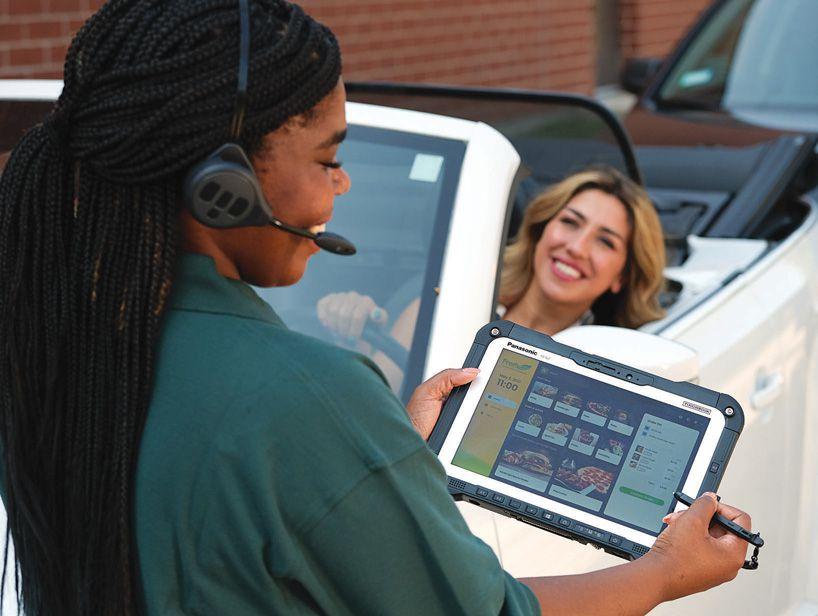
“Third-party delivery proves that the customer experience is no longer limited to within the physical walls of the restaurant or its immediate location.”

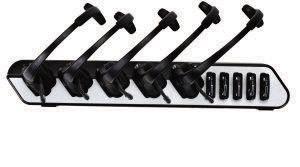




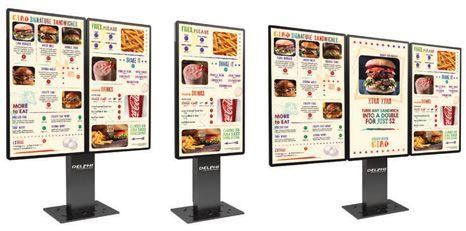


Delphi’s Insight Track™ timing systems provide QSRs with actionable real-time speed of service data in the drive-thru.

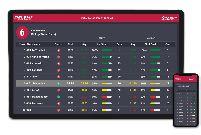
that need attention to keep the drive thru running at maximum based competition ranking leaderboard that allows multiple stores to compete on a variety of performance metrics.
Delphi delivers a wide variety of indoor and outdoor digital available in both LCD and LED formats.



Delphi’s indoor and outdoor digital menu board solutions are designed for QSR and Fast Casual business owners seeking to modernize their restaurant with full control over dynamic menu content via our Insight Engage™ 3.0 cloud-based content management system. The system supports on-screen order most point-of-sale systems. Engage 3.0 has been designed to be and programming requirements. 714.825.3495

video option to enhance communication with your customers.
Providing clear communications is key to quality customer experiences and productive teamwork in the drive-thru. Delphi as a key component of our total drive thru technology package.
Delphi’s Visera™ line of Interactive Smart Kiosks serve as ideal digital solutions for QSRs seeking to provide interactive engagement and self-service options for their customers or employees.

also needed, which requires clear signage and space to implement.”
In addition to streamlining operations and bringing in revenue, perhaps the most exciting aspect of all this technological innovation in the drive thru is the new and exciting opportunities it presents to -
interaction? What can you do to stand out when a person is scrolling through a third-party app, and you’re one out of a multitude of options?”
With drive thru playing such a large part in overall sales, many brands have dedicated extensive resources to optimizing their drive-thru operations. To ensure
times in drive-thru checkpoints, operators can gain a more holistic view of how this critical aspect of operations continues to change and evolve.
As the drive thru continues to evolve over the next few years, expect to see the incorporation of more integrated technol-
provide more information to serve customers, KPIs to track progress, and generally enhance the customer experience. Restaurants will morph into multi-faceted stations that can support several channels simultaneously, including self-serve kiosks, dine-in, curbside pick-up, storage lockers, and multiple drive-thru and walkup windows.
“When you layer on more advanced technology—wireless sensors, cameras, and AI—you can customize and personalize the drive-thru experience,” says Chris Riegel, CEO of STRATACACHEilar to the Amazon shopping experience that learns customers’ shopping preferences and desires over time. When you know more about your customers beyond POS data, you’re able to make a relevant, targeted suggestion in real time.” -
a return on this investment, it’s critical that restaurant operators track and measure these touchpoints just as they do in other areas of the drive thru.

“Automation, voice AI, analytics, and other innovations are sweeping the industry, and with scale and infrastructure to test out new technologies that can improve guest experience, labor optimi-
interact with loyalty apps, provide data analytics, and capture the trends of the individual customer. As that happens, the content displayed on the screens can be more personalized and engaging than ever before, making customers feel valued and want to return.
tomer experience provides opportunities to engage with customers without necessarily interacting with them in person.
customer experience is no longer limited to within the physical walls of the restaurant or its immediate location,” Foley says. “How will customers perceive you and your brand when there’s no face-to-face
restaurants are leading the charge,” says Ben Brown, vice president of marketing at ConverseNow
One step brands can take is to designate waiting areas for delivery drivers and track their wait times to help make theirers can pick up food and be on their way, with delivery services. By measuring wait
“Further IoT integrations will play key roles in the drive thru for both large brands and smaller restaurant concepts. System integration of loyalty apps with vehicle IoT systems, for instance, will allow drivers to safely place orders with audio commands,” Symon says.
AI menuboards are also on the way. Permission-based screen messages targeting customers prior to order placement on -
ible opportunity for the business and the -
ized content strategy that best matches the customer’s dietary requirements is the
“ When you know more about your customers beyond POS data, you’re able to make a relevant, targeted suggestion in real time.”
•Mobile



























•Sensor-ready



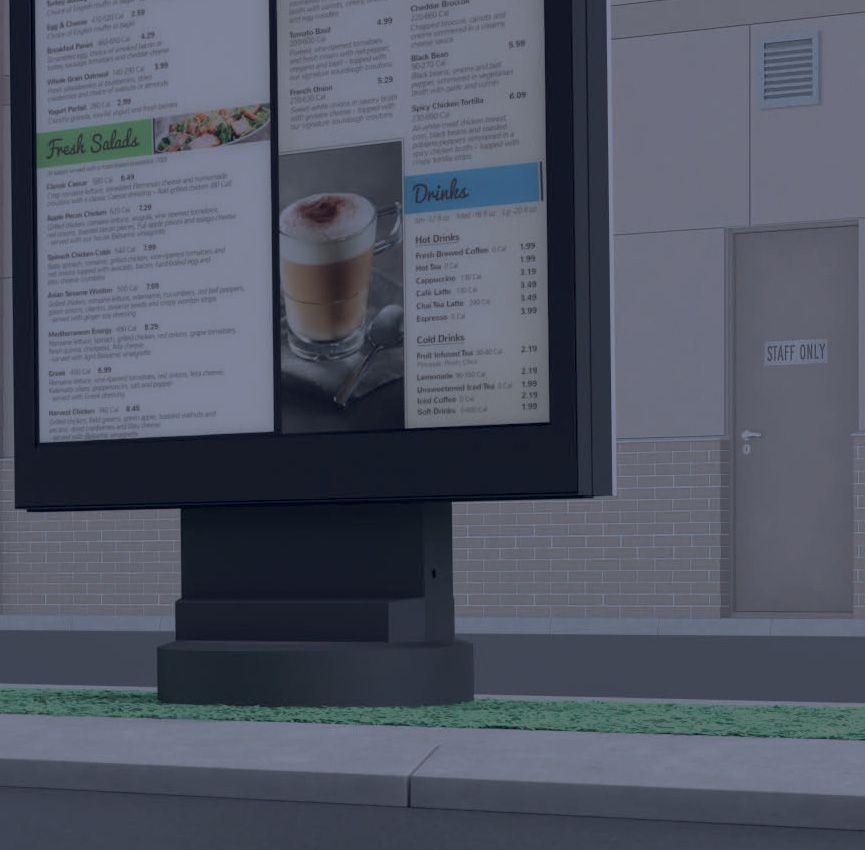
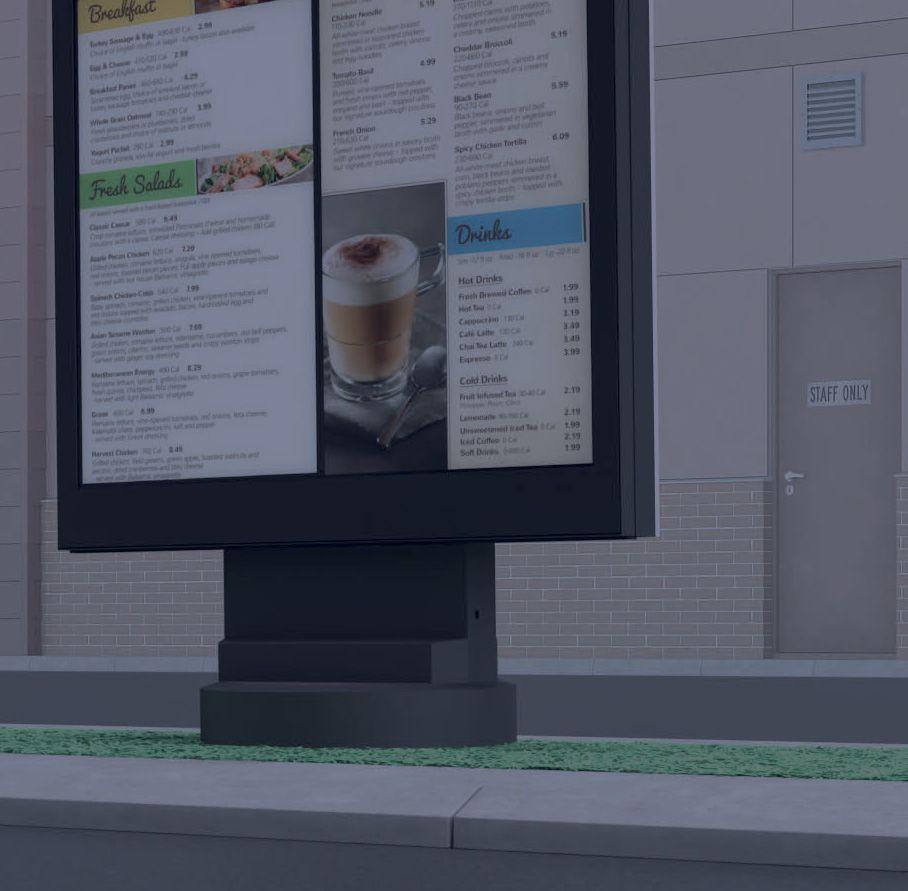



















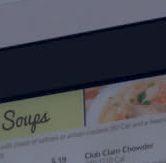










•Curbside pickup solutions



















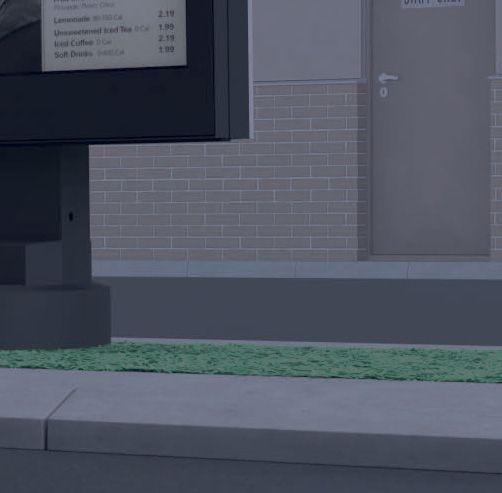


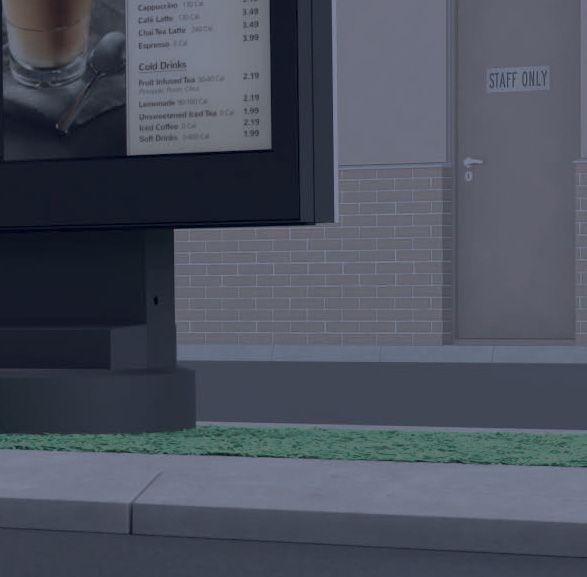


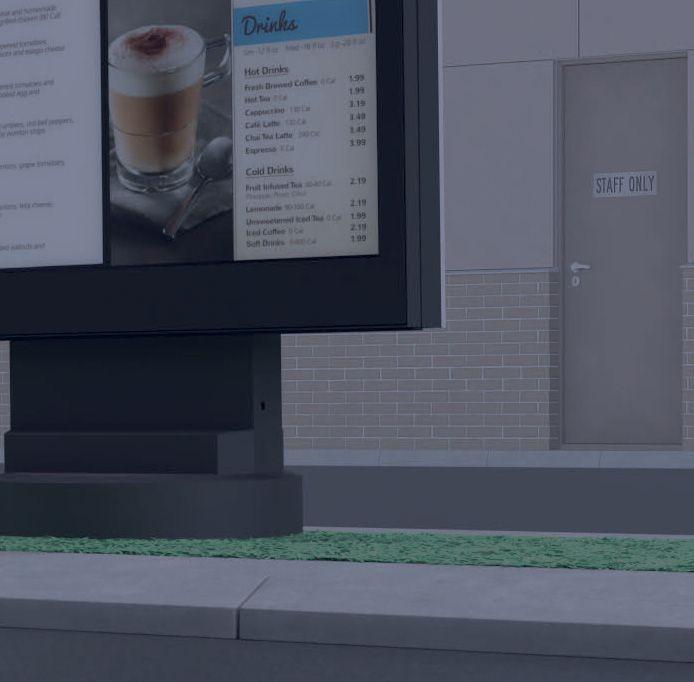
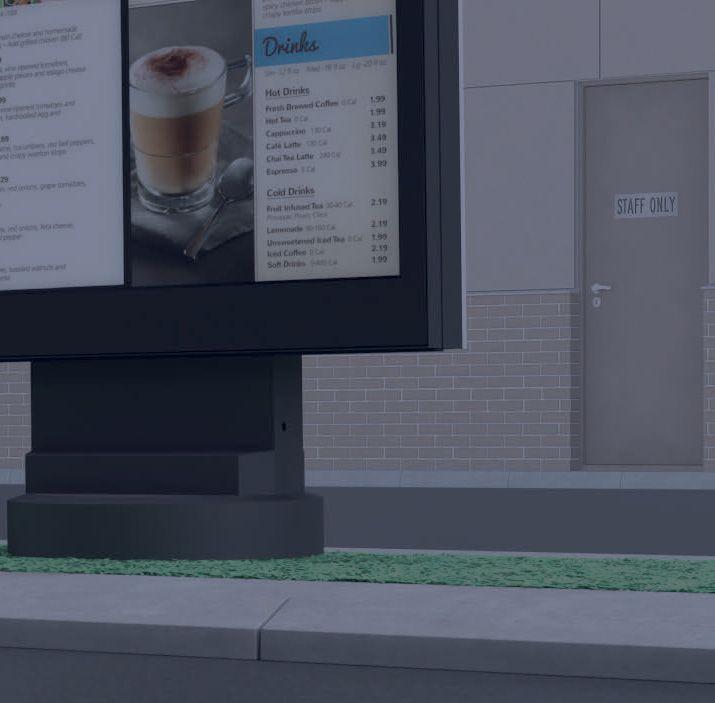
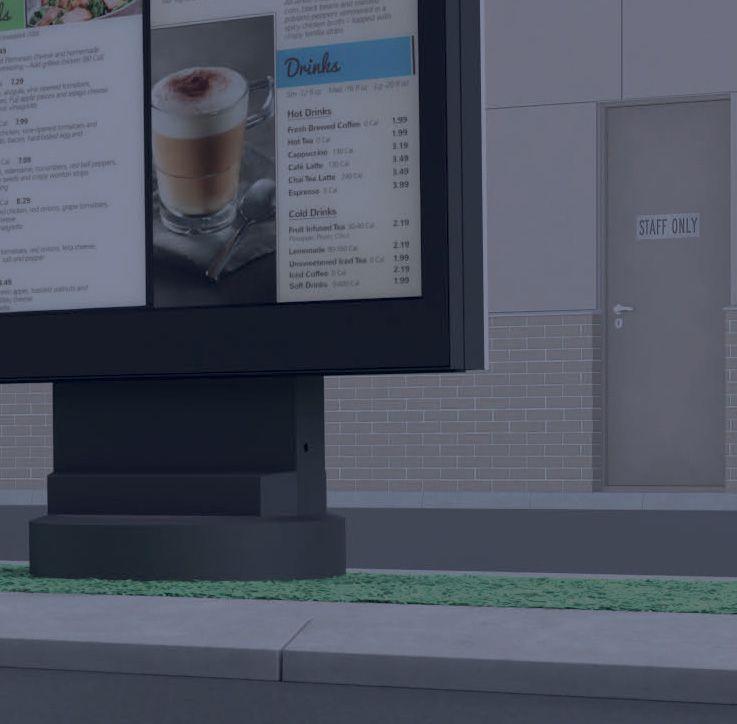
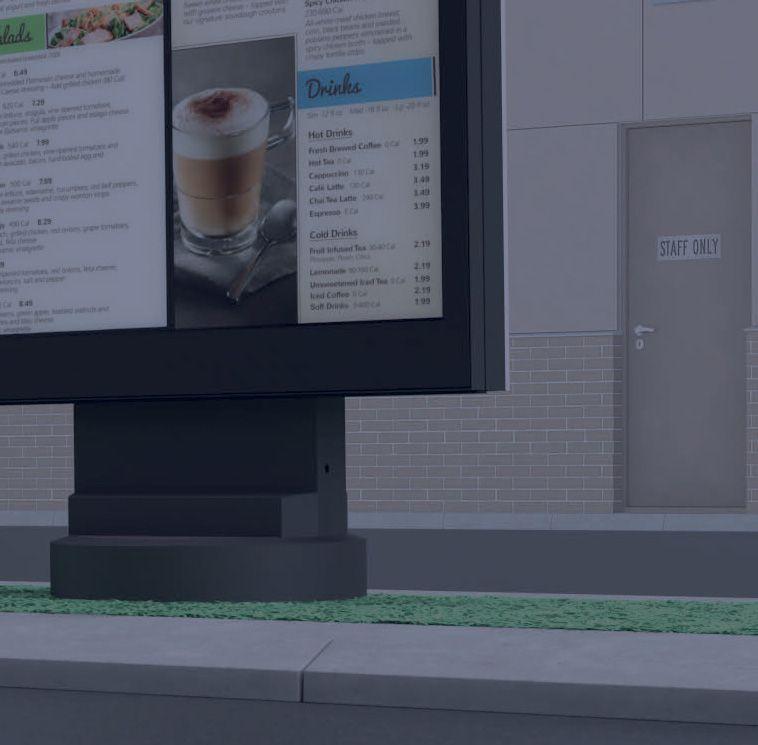

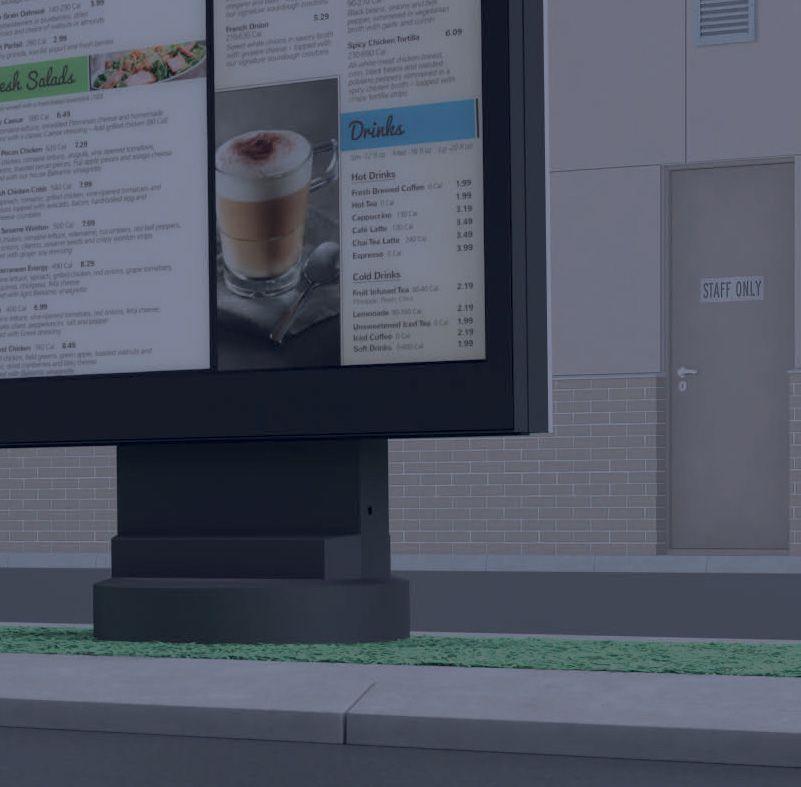







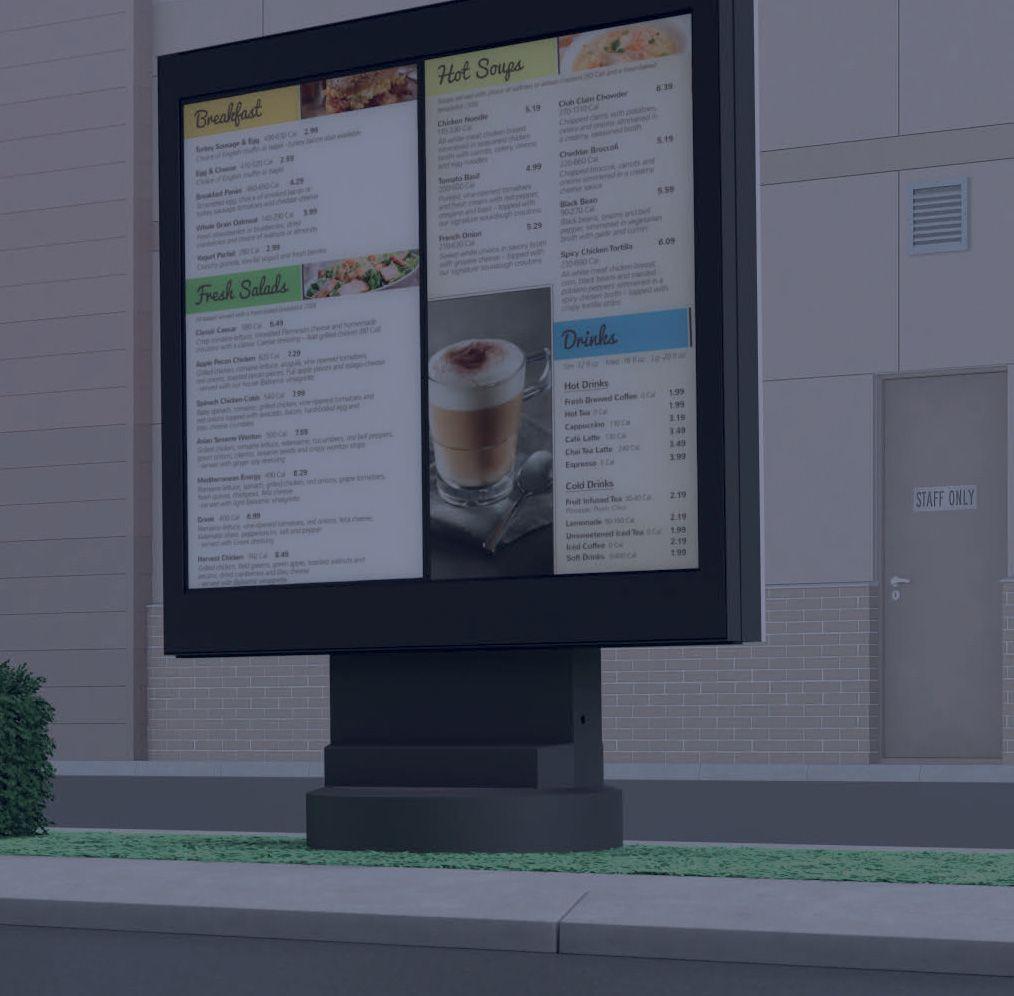






































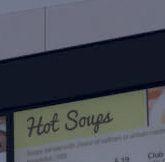






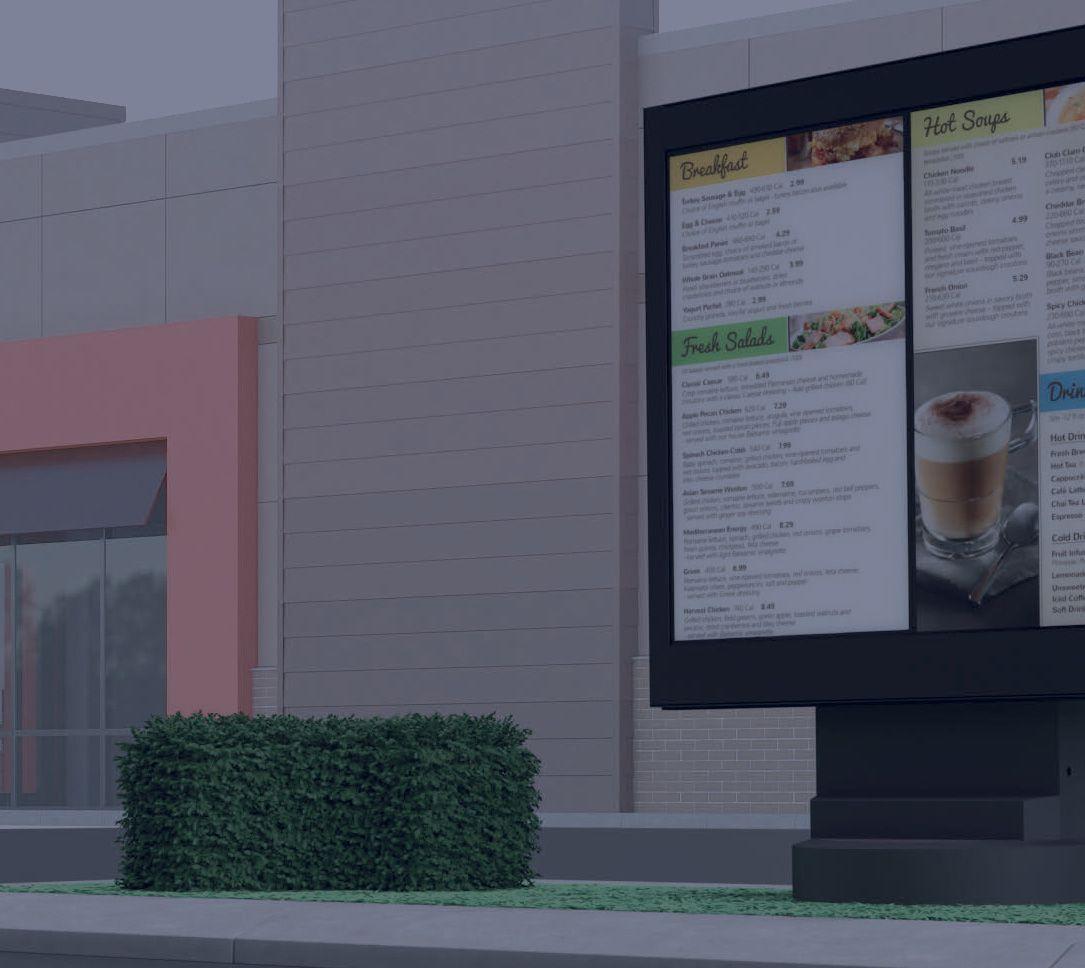
next frontier for quick-serve restaurants.



“Operators should take the pandemic-driven changes as an impetus to future-proof their business.”












Drive thru has always been a key aspect of quick-service restaurants. Even pre-pandemic, as much as 70 percent of sales came through the drivethru window.
During the early days of the pandemic when dining rooms closed, the drive thru became the single most important way to serve customers. Unfortunately, many operators soon realized that their drivethru communication systems hadn’t been
“New business practices were needed to communicate with customers, deal with supply chain shortages, and take payment from customers who didn’t want to hand their credit cards to a crew person,” says Eric Symon, vice president of Panasonic Connect North America pushed both front-of-house and back-ofhouse technologies forward due to the delivery.”
Many quick-serve restaurants had been headsets, legacy point-of-sale ( ) sys-
“A successful drive-thru program combines strategy, technology, and psychology to enhance the customer journey,” says and

In order to address the rapidly-changing consumer landscape of the past two years, operators are stepping it up and bringing the latest technological advancements to the restaurant space—a colos-
ally lagged behind in this department. Major franchises are going all in on arti), smart signage programs, and Wi-Fi marketing to completely revamp the drive-thru experience.
It goes without saying that drive-thru areas should be kept clean, free of trash and debris, and have enough room for vehicles to maneuver through the propand quickly repaired when potholes or
days, the hot conversation revolves around digital.
installation of a digital drive-thru platformnology stack and platform selected can either empower or limit operators’ ability to deliver future customer experiences. It’s not necessary to have all technology or features enabled, but it’s critical to design a
“The number one component of a successful drive-thru program is having the right content.”
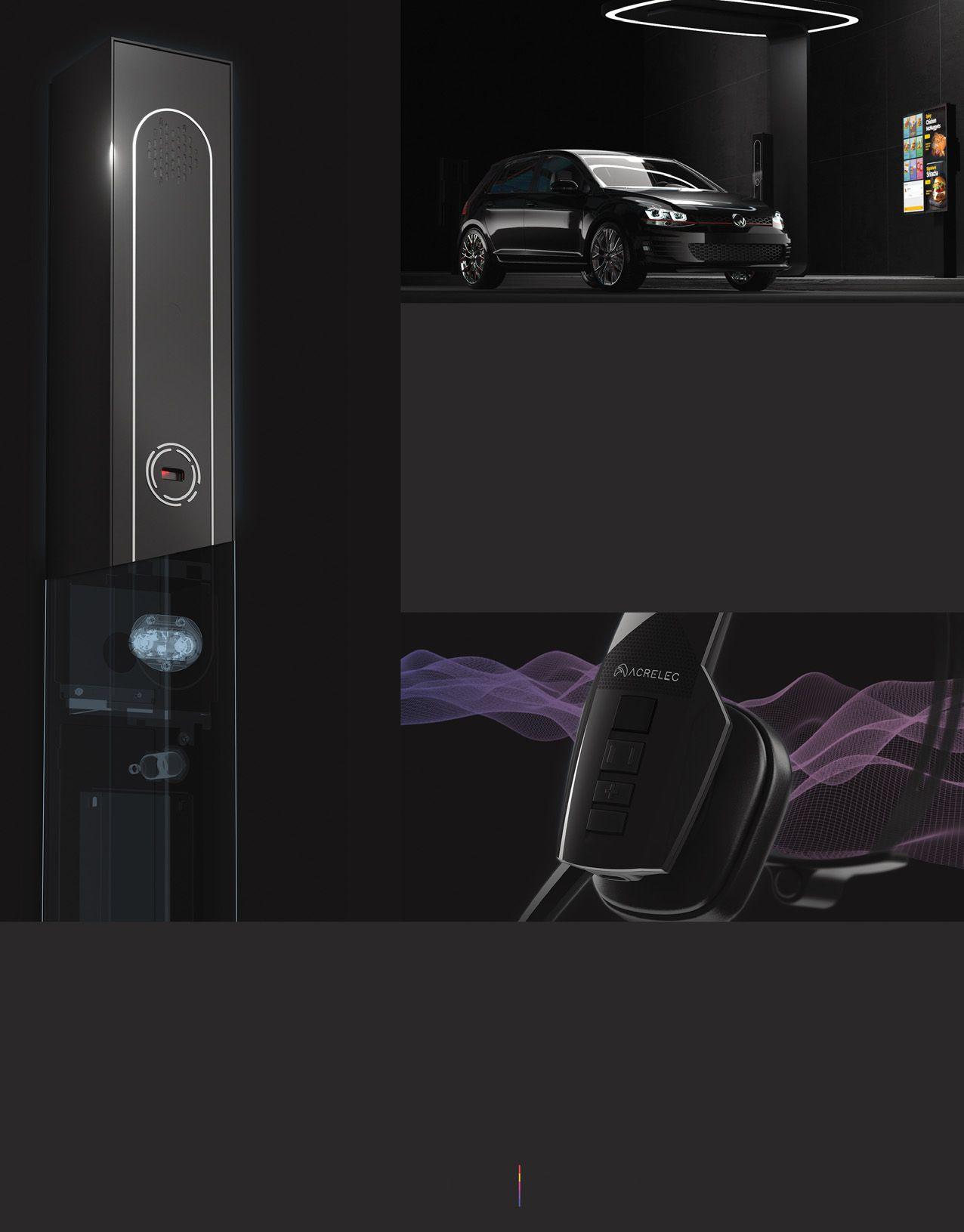


program that will keep the business competitive within the landscape over time.
“A modern drive-thru program starts by determining what the future of the restaurant experience might look like, then enough to support a plan for growth,” saysware design and engineering at Coates Group. “It’s important to have a robust
negative impact on guests’ experience. Unfortunately, this step is usually the last taken—if at all.”
It is absolutely critical that operators take the time to create a clear content strategy that aligns with the brand’s ethos and growth projections. Once the goals of adding digital to the drive thru have been developed (increasing order
experience for the customer long term.”
In addition to the clear content strategy, operators should put themselves in the customer’s shoes and experience the drive thru in the same way they do. What do you see when you enter the parking lot? Do customers have a clear view of garbage containers and dumpsters (which should be concealed behind visual barriers if at all possible) or are there appealing visual elements such as landscaping and modern hardware that provide a subconsciously
“It begins with a well-lit area, a restaurant exterior that is visually appealing, and a canopy that protects customers from the weather,” says Doug Watson, president and CEO of The Howard Company “While in line, the placement of equipment, the stacking space of vehicles, solutions that tell the brand’s story, menuboards that are easy to read, communication, timimportant elements.”
plan that considers the whole spectrum of transition to new digital experiences.
to continue to develop on the platform.” is a key component to a digital drive thru.grate with new technologies will enhance overall objectives and performance, save money over time, and help the restaurant stay competitive in an ever-changing consumer landscape.
-
cessful drive-thru program is having the right content,” says Robert Heise, executive vice president and general manager for Global Display Solutions. “All the displays in the world cannot improve bad content, which can end up having a

dayparting of the menu, for example), the
implementation, there are several details to consider: screen placement, number of screens, size, brightness, menu layout, tim-mercial leader at LSI Industries. “Because you can do more with digital, building
Every touchpoint plays a role, and can help or harm a customer’s engagement with the brand. “Providing a high level of engagement with the customer from the time they enter the drive thru to the time they leave improves the overall customer experience, reduces perceived wait times, and drives customer loyalty,” says Ken Neeld, president and CEO of Delphi Display Systems. “By leveraging digital presell and menu displays, operators can drive their brand message, provide visibility around new products and promotions, and create a dynamic experience that creates loyal customers.”
From an experience standpoint, speed of service, order accuracy, friendly service, food quality, and customer trust are all critical elements. Perceived speed is just as important—perhaps even more so—than actual speed. When customers are engaged, occupied, or entertained throughout the drive-thru journey, they perceive the overall wait time to be faster than it actually is.
“Reducing wait times is one of the most important elements of the experience,”
Central region, Peerless-AV achieved through order accuracy, commu-
“Reducing wait times is one of the most important elements of the experience.”
Peerless-AV PEERLESS-AV




nicating customer payment readiness, and
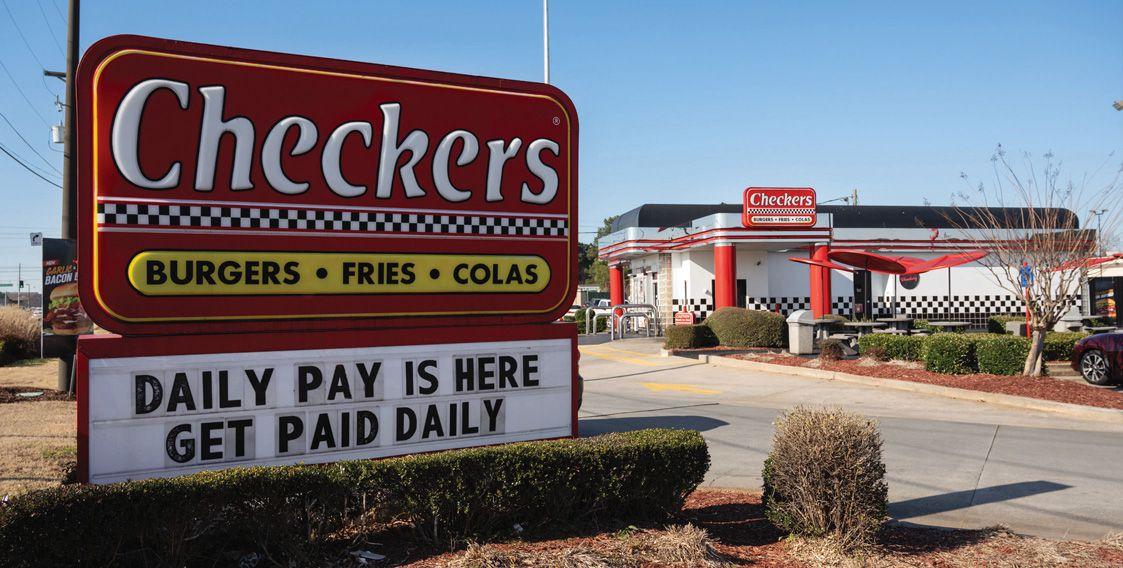
An old trick to decrease perceived them something to do while they wait,to smile and engage the customer versus being distracted while trying to take marketing manager at Ready Access
installation or rollout program requires detailed planning and organizational skills—a critical element when it comes to -
“A well-planned installation minimizes downtime and saves the owner time and -
Once brands have content and installation plans in order, it’s time to think about
imperative the presence sensor, microphone, speaker, and headset systems
Valyant AI ensures there are no communicationacting with brands and also that restau-leading restaurant brands adopting this industry standard in drive thru in the

branding is consistent throughout the driveUniStructures
tural designs should be included in every
“A well-planned installation minimizes downtime and saves the owner time and money.”Uni-Structures












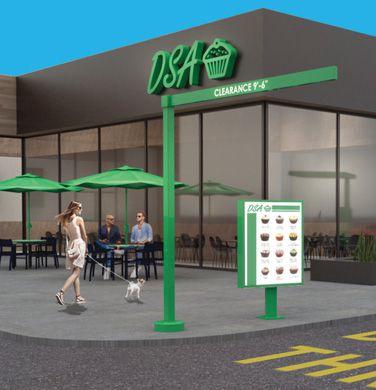
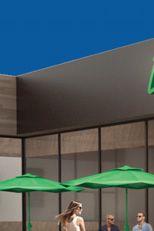


“Investing in a drive-thru system without voice AI capabilities is akin to buying a TV that can’t link to streaming services,” says Ben Brown, vice president of marketing at ConverseNow
With curbside pickup being so popular, operators should have a third headset channel exclusively for managing these this feature is important. Ask about the sound quality and noise reduction capabilities—these features should be top shelf.
“Sound quality and noise reduction are critical to ensure accurate, stress-free order taking,” says John Bardeau, director of retail sales—North America at Quail Digital.
Another important aspect is timers. While timers have long been used incant advancements in this technology in recent years. Drive thrus that have speed of service timers already measure speed between the speaker and the window.
When restaurants use line busting to take orders, however, timing is more dif-
based timing systems, on the other hand, can measure any interaction anywhere within view of cameras.
“Drive-thru vision technology that what is happening in the drive thru is a Xenial, A Global Payments Company. “It queues cars on the POS for line busting, provides ani-

technology can automate two-lane mergesful drive-thru program is outdoor digimany capabilities, including promoting marketing campaigns and LTOs, displaying dynamic visuals that can persuade showing the customer everything added to their cart to ensure there are no mis-
“Using a combination of data and AI, digital signage can suggest a smaller number of items that it knows are less complicated to prepare in the kitchen,” Denolle says. “On the contrary, when there is no line at the drive thru, you can display premium products that take longer to prepare on the menuboard to entice customers to purchase higher-cost items.”
doesn’t start at the order point. Pre-sell boards can engage customers while they wait. For example, brands can promote their social channels, best-selling items, or even show weather updates, community news, or trivia questions.
“It’s very likely that customers are already on their phones as they’re sitting and waiting for the queue to move, so why not make it easy and fun to use their phones to engage with your brand?” says Paul Foley, president of HME Hospitality & Specialty Communications.
While the pandemic threw quick-serve restaurants for a (very long) loop, it’s exciting to see operators stepping up to the plate and embracing new, innovative technologies that help solve the industry’s
mated visualizations, and enables realtime digital menuboard interactions.”
ground loops for camera systems, also thru timing. Because the video technology tracks cars and orders them throughout the entire experience, digital menuboards can be repurposed for upselling during
is busier than ever, and, while a it can be challenging, it is a unique opportunity to grow and create loyal customers by delivering the right experience.
giving them the same personable, customtailored experience they’d have walking into the dining room—with some natural adaptations to do so from the comfort of their vehicle,” Brown says. SC
“Remember: The signage experience doesn’t start at the order point.’


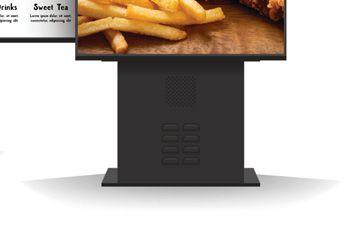




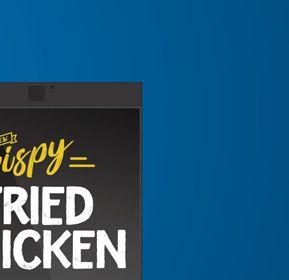












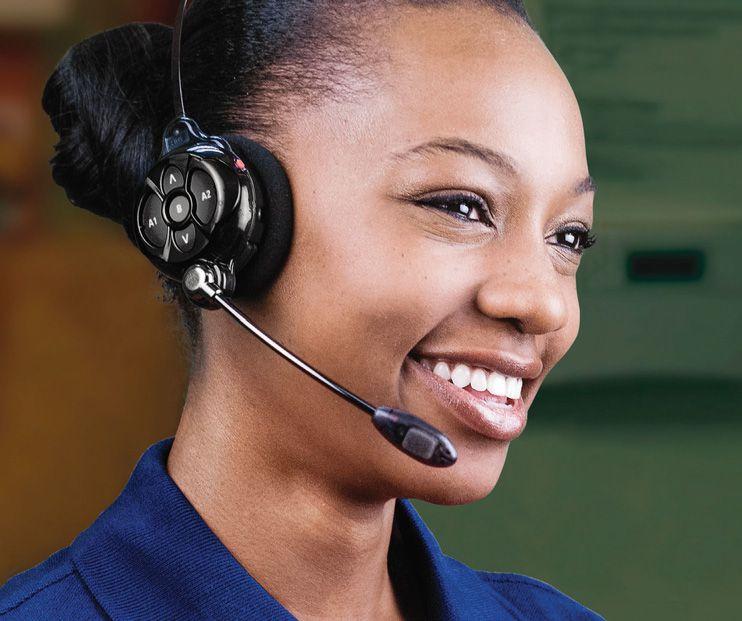
Before the pandemic, a strong drivethru trend was to provide a more “human” experience. Face-to-face ordering and line busting were the norm. Not only did this provide a high level of customer service, it increased the speed and efficiency of the ordering process and improved overall throughput. -
ence has been shown to increase satisfaction and decrease the perceived wait time in the drive thru,” says Rachel Armstrong, director of sales and marketing for Uni-Structures
But post-pandemic, the drive-thru
two years, and many industry experts expect it to continue for at least the next 18 months as the U.S. grapples with ris-
the road are beginning to emerge—with almost diametrically opposed approaches to the drive-thru window.
On one hand, customers like the conpre-pandemic “hands-on approach’’ provided. When done well with genuine customer-centric service, it makes guests feel special. Restaurants were adapting their buildings with larger service openings to cars.
also has downsides, such as the need to balance HVAC considerations in cold climates, food safety from vermin and insects, and security,” says Anna Ellis, sales and marketing manager at Ready Access. “It is also dependent on a restauto conduct this type of operation.”
for safety and to use more automation to shortage has become an existential crisis for restaurant operators and has resulted in thousands of restaurants limiting hours, extreme cases, closing altogether. Drive thru has become the dominant order point since the pandemic started and provid-
ing solutions to make the experience as
“nice to have” to being a necessity in order to stay in business.
Obviously drive thrus have tremendous potential to help quick-serve operators cope with the labor shortage and other industry challenges. With less traf-
“
This more personal customer experience has been shown to increase satisfaction and decrease the perceived wait time in the drive thru.”




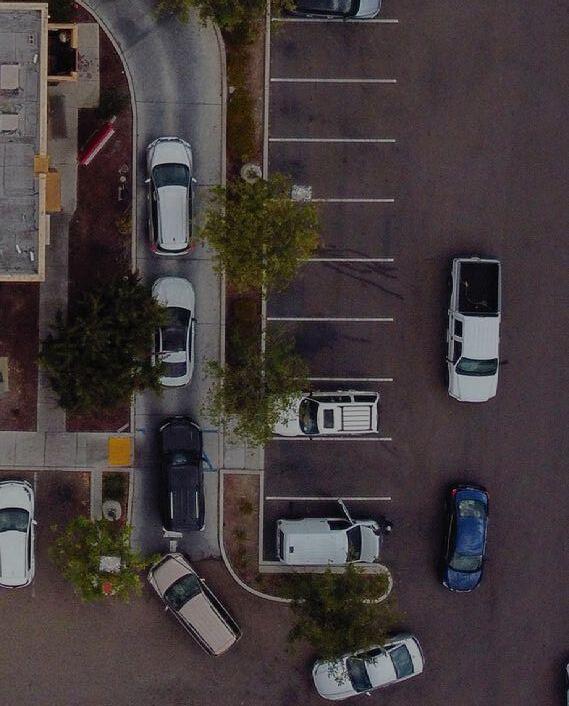





the kitchen can focus more on drive-thru and delivery orders, which skyrocketed over the past two years.
drive-thru stations in the same way as president of marketing at ConverseNow
more pronounced, since cars are of course much larger than people, and seeing a
According to a recent online survey of Poll, 65 percent of respondents who visited a drive thru in the preceding six months had an unpleasant experience. Twenty-answer to long lines.
Nearly half of respondents to the sur-inate all human interaction when visiting a quick-service restaurant, assuming
any other age group.
of people who visit drive thrus are ready to eliminate human interaction from the encounter suggests that more people than ever are primed for contactless experi-
ogy at Xenial, A Global Payments Companying operators to fully automate the drive-
online ordering with the personal touch of a traditional human conversation. While
is set to completely reshape the drive-thru experience as consumers know it.

are like the advent of the camera phone:
completely transforms the category and
sounding and emotionless, think again. Today’s technology mimics a natural conversation, speaks clearly with intona--
For example, one of the unique oppor--
can look like a human, the company mascot, or even a cartoon character or superadvertising partnerships.
the persona of the voice can go a long

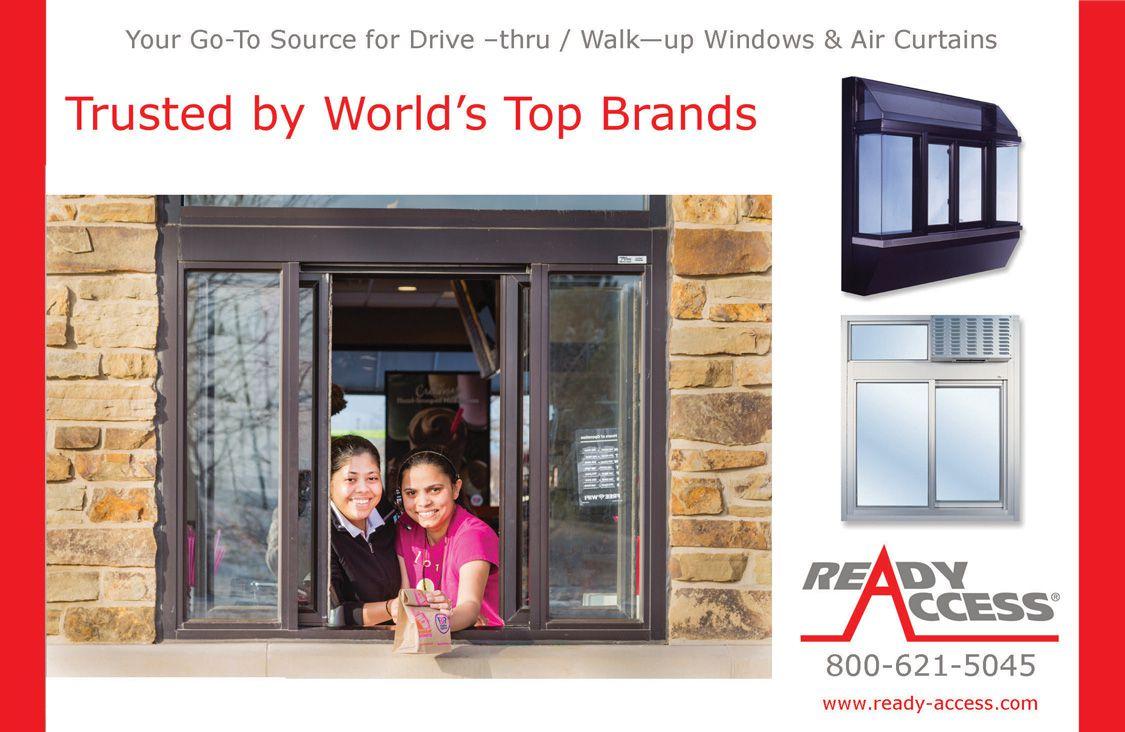
way to ensuring a positive customer journey through the drive thru,” says Rob Carpenter, CEO of Valyant AI. “Guests know they will always have a pleasant and happy-sounding digital employee greeting them and taking their orders, regardless of whether it’s 8 or 2 .”

For guests, voice AI addresses the critical components of speed and accuracy.
sales and data collection. Automatic, dynamic upsell leads to customers selecting more toppings, sides, drinks, desserts, and other add-ons. “Voice AI technology can increase average ticket size by 15–20 percent,” Carpenter says.
Additionally, enhanced operational especially during peak hours. Voice AI
frequency of repeat customers if they can be tracked via license plate, phone number, or geofencing through loyalty apps.”
AI-based voice ordering solutions are already being tested at several quick-service restaurant concepts and appear to be a big part of drive thru’s future—but successful deployment of such solutions can
prepared for a sustained period of on-site testing and evolution based on feedback about the user experience.
As voice AI becomes more mainstream, guests will inevitably become more accusrather than a team member, but some people—typically older customers—may take longer to get on board. It’s imperative for voice AI companies to provide guests with an option to speak with an agent when desired and to have an agent available to handle issues as the AI continues to perfect its understanding of a restaurant’s menu options.
“Leading voice AI companies are cognizant of a gradual transition rather than trying to force the process, using a guestcentric ‘agent in the loop’ model that gives guests the option of speaking with a human when necessary or requested,” Brown says.
Automating the order-taking process elim-
can also help take data collection to the next level.
them, rather than split time they don’t have between the two tasks. Picking up the slack here leads to less stress on the job, higher quality of life, and, ultimately, stronger retention.
For operators, voice AI unlocks a new world of possibilities in terms of improved
“Drive-thru operators already measure the average time to service a customer since this is critical during peak times,” of Predictika. “One of the advantages of using AI-based ordering solutions is that it becomes easier to track new sales metrics: how much the average order size is avatar; what items are ordered at times items ordered that have been discontinued or are not served at this restaurant; and
As technology companies move from research and development to full-scale rollout, drive-thru AI technology will certainly become more common in the nottoo-distant future. Nearly every major quick-serve brand is pushing to incorporate voice AI in its stores, while leading base station and hardware providers are equipping their systems with voice AI capabilities and creating plug-ins that ret-
“I believe that by the end of the year we’ll be looking at 500 to 1,000 restaurant locations across the country running drive-thru AI technology,” Carpenter says. “When you factor in labor shortages, inability to hit upsell sales metrics, and the challenges of remaining cheerful and presenting a clear brand voice at any hour, drive-thru AI automation technology becomes a requirement.” SC











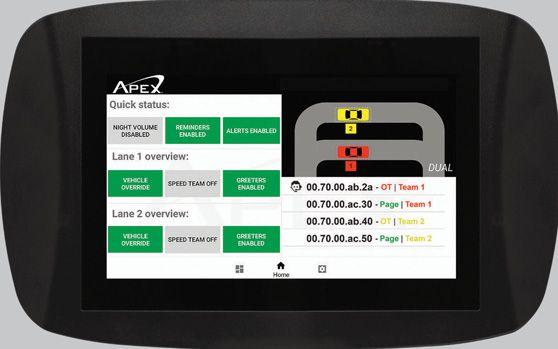
1327 W. Washington Blvd. Chicago, IL, 60607 (877) 334-9737
acrelec.com
Acrelec is a global technology company focused on reinventing the customer experience for restaurant and retail brands. Leveraging decades of software, hardware, and service expertise, we develop and integrate new platforms that increase customer engagement, optimize efficiency, and improve operations for the world’s leading smart stores.
11801 Domain Blvd., 3rd floor Austin, TX 78758 (512) 333-2836 conversenow.ai
ConverseNow provides virtual assistants that automate drive-thru and phone orders. Their best-in-class voice AI technology performs with remarkable accuracy, enhancing guest experience while freeing up to 90 hours of labor each month. Boosting same-store sales up to 20 percent and average ticket up to 25 percent, ConverseNow is working with top quick-service brands and live in more than 1,000 stores nationwide.


112 North May St. Chicago, IL 60611
(312) 374-1365
coatesgroup.com


Coates Group is a global technology and digital merchandising solutions provider creating immersive experiences for some of the world’s leading brands. Our proprietary content management system, Switchboard, enables dynamic and personalized customer journeys across our range of innovative hardware products—a suite of indoor and outdoor digital solutions, self-order kiosks, and more.

3550 Hyland Ave. Costa Mesa, CA 92626 (800) 456-0060 delphidisplay.com
Innovator of best-in-class consumer engagement and business optimization solutions, Delphi Display Systems has been a technology leader in the quick-service restaurant industry for over 20 years. Offerings include indoor and outdoor digital menuboards, order confirmation displays, drivethru timing systems, cloud-based content management systems, and real-time performance ranking leaderboards.

5217 28th Ave. Rockford, IL 61109 (815) 713-2439
displays.gds.com
For more than 40 years, GDS has been a technology leader and leading manufacturer of LCD and e-paper display solutions for indoor and outdoor quick-service applications. GDS’s position as the chosen partner of some of the world’s leading blue-chip companies is achieved and maintained by providing best-in-class solutions, products, and services.


2848 Whiptail Loop Carlsbad, CA 92010
(858) 535-6000
hme.com/qsr
HME was the first to introduce the wireless drivethru headset system to the restaurant industry over 40 years ago. Today, our patented Wideband HD Audio delivers an unmatched voice clarity for drive-thru communication. Every day, restaurants in over 140 countries fulfill more than 30 million orders using HME systems.


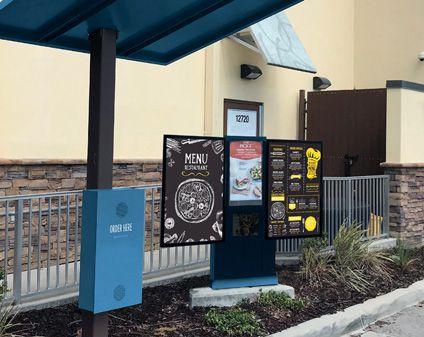



1375 N. Barker Rd
Brookfield, WI 53045
(262) 782-6000
howardcompany.com

The Howard Company is the nation’s leader in digital menuboards and drive-thru equipment. We provide digital indoor and drive-thru menu systems, illuminated and non-illuminated menuboards and marketing products, and permanent and semi-permanent POP retail merchandising displays. We connect our customers with their customers.
10000 Alliance Rd. Cincinnati, OH 45242 (513) 793-3200
lsicorp.com/markets/qsr
LSI Industries is a leading provider of digital solutions and program implementation for quick-serve restaurants. Quick-serve restaurants looking to grow their business, reduce wait times, and provide exceptional customer experiences turn to LSI. As an extension of your team, we bring vast experience, creativity, and capabilities to every project.
2 Riverfront Plaza Newark, NJ 07102 (877) 726-2767
na.panasonic.com/us

Panasonic Connect is a B2B company offering device hardware, software, and professional services for the connected enterprise. We have a portfolio of solutions that includes food lockers, self-ordering kiosks, POS hardware and software, BOH solutions, and drive-thru communications. We work closely with our ecosystem of partners, innovators, and integrators to provide the right technologies to address our customers’ needs.
2300 White Oak Cir. Aurora, IL 60502
(630) 375.5100
peerless-av.com

For over 80 years, passion and innovation continue to drive Peerless-AV forward. We proudly design and manufacture the highest-quality products ideal for restaurant applications, including outdoor displays and digital menuboards, dvLED and LCD video wall systems, complete integrated kiosks, and more. Peerless-AV develops meaningful relationships and delivers world-class service.

2237 Rutherford Lane Fremont, CA 94539 (510) 673-4515
predictika.com
Predictika has developed a patent pending conversational AI platform for building text and voice based virtual assistants for food ordering for quick-service restaurants (including drive thru and phone), the hospitality industry, and education. Predictika’s technology easily allows development of virtual assistants that interact in flexible and free-form natural language.
2929 Carlisle St., Ste. 373 Dallas, TX 75204 (802) 598-7801
quaildigital.com
Professional wireless headsets for quick-service restaurants, healthcare, and retail. Made for drive thru, Pro9 is a multi-channel headset designed for single and dual lane drive-thru, great for both curb-side ordering and in-restaurant table service. Comfortable to wear, with wireless registration, and superior intelligibility, the future of drive thru is Pro9.








11441 Brittmoore Park Dr. Houston, TX 77041 (800) 388.8307
quikserv.com
Quikserv is a world-leading supplier of drive-thru windows, ticket windows, air curtains, transaction drawers, and bullet resistant transaction systems. Quikserv offers the largest selection of transaction window models available in the market and specializes in custom options to ensure they can provide a tailored solution suited for every customer.

1815 Arthur Dr. West Chicago, IL 60185 (800) 621-5045

ready-access.com

Ready Access is your go-to source for drivethru and walk-up transaction windows. A market leader for over 50 years, Ready Access is trusted by the largest chain restaurants worldwide. Patented designs self-close per health code and provide the perfect balance of value and durability. Let our experts help identify the best solution for your project based on budget, functionality, and climate.
330 Lexington Drive Buffalo Grove, IL 60089
800-598-2370
sales@rftechno.com
rfdrivethru.com
For over 30 years, R.F. Technologies, Inc. has been an industry leader for drive-thru equipment repairs. We offer repair programs custom designed for single or multi-unit operators. RFT is also your single source for drive-thru systems (including our new APEX Drive-Thru System), surveillance and music systems, along with a wide-range of products and accessories. Nationwide on-site repair and installation services are available, too.

40 N. Main St. Dayton, OH 45423 (937) 443-0900 stratacache.com
STRATACACHE provides a full scope of technology solutions across mobile, kiosk, counter, and drive thru. Through a combination of smart digital menuboards, sensor systems, and AI, our technology improves the guest experience and loyalty through customization. STRATACACHE is trusted by seven of the top 10 quick-service brands.
3000 Lawrence St., Ste. 203 Denver, CO 80205 (303) 358-6128
valyant.ai
Valyant AI is building the workforce of the future and becoming the AI software provider of choice. One of the world’s first commercial deployments of enterprise AI, Valyant can easily integrate with drive thrus to automate order taking, and simultaneously offset existential labor challenges and increase topline revenue by 15 percent.


3420 Toringdon Way, Ste. 400 Charlotte, NC 28277 (855) 936-4251
xenial.com
Xenial (pronounced zee/nee/ul) comes from the ancient Greek word for hospitality, and our namesake drives our obsession to power your enterprise’s hospitality success. Xenial is a single technology platform that offers enterprise-ready restaurant solutions, customer engagement tools, and global reach.

The extent of food waste is staggering. Though the figures are dynamic, a report by United Nations Environment Programme published in 2021 estimated 931 million tons of food waste was generated in 2019, globally. Of that figure, 26 percent was derived from food services, particularly in highincome countries.
In the U.S., the picture was no better. ReFED, a nonprofit dedicated to ending food loss and waste, noted 35 percent of food in this country went unsold or uneaten, translating into $408 billion worth of food. Using figures from the Environmental Protection Agency, in 2018 about 103 million tons of wasted food was generated, representing 63 million tons in the commercial sector alone. Restaurant and food services accounted for producing 17 percent of the overall waste.
The effect of food waste on the environment is equally troubling. Food waste that is not composted goes directly into landfills and produces methane gas, which, according to the Environmental Protection Agency, accounts for about 10 percent of all U.S. greenhouse gas emissions. Methane gas emissions—derived from the decay of organic waste—have a direct effect on climate change. It has accounted for 30 percent of global warming since pre-industrial times. And according to the United States National Oceanic and Atmospheric Administration, while carbon dioxide emissions decreased during the pandemic, methane gases actually increased.
In the introduction to the UNEP report, Inger Andersen, the executive director of UNEP, notes, “If food loss and waste were a country, it would be the third biggest source of greenhouse gas emissions. Food waste also burdens waste management systems, exacerbates food insecurity, making it a major contributor to the three planetary crises of climate change, nature and biodiversity loss, and pollution and waste.”
The reasons behind food waste at the restaurant level are multifold. Wasted food includes everything from unusable kitchen trimmings to expired food to uneaten prepared food by consumers to overbuying.
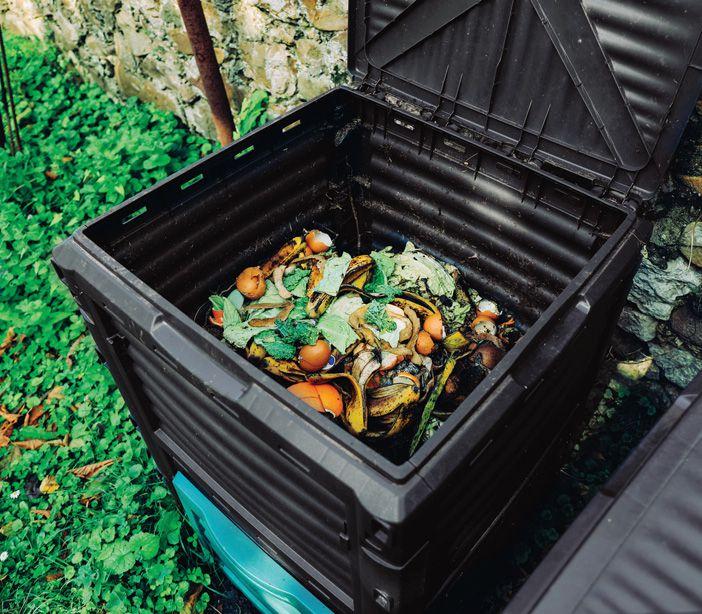
Whether or not there is an actual movement in the restaurant
industry to curb waste is up for debate, says Jeffrey Clark, director of expert exchange communities with The National Restaurant Association. “A lot of restaurants are having so much trouble just keeping the doors open and having staff leave due to ‘The Great Resignation.’ With all of these things, food waste has taken a back seat,” he says.
However, he adds, there is a lot of pressure from the eco-conscious consumer to move in this direction. “There is definitely more awareness by the consumer now, at least that I’ve ever seen. It’s a much more sophisticated and engaged consumer. Your consumers are going to start demanding this soon if they haven’t already,” Clark says. Plus, new municipal regulations aimed at restaurant food waste are becoming more common. For example, in Austin, Texas, a 2018 recycling ordinance requires restaurants to compost food scraps or give them away. Clark says it is better in the long run to voluntarily take the initiative to curb food waste before it is legally mandated.
While zero waste may be elusive, there are steps restaurants can take to mitigate the problem. An initiative and partnership between
the Association and World Wildlife Fund, 86 Food Waste provides waste-reduction guides and tips for restaurants. These practical solutions were garnered after doing food waste audits at restaurants via Leanpath, a company that does food waste analysis on the back end of the kitchen, weighing how much food is being thrown away. “For example, you analyze the cost of throwing away a tin of cooked carrots and how much it would cost to your company if you did the same thing every week for a year. It gives you the breakdown of how much food is tossed in the trash. Doing that front-end analysis in terms of food waste is most efficient and allows restaurants to understand that they throw away more food than they think,” Clark says.
As adapted from the 86 Food Waste Report, Clark says restaurateurs that want to start tackling food waste can begin by doing the following:
• Contact your local waste utility, state, or county waste division and see what infrastructure is available.

• You can’t manage what you don’t measure; separating and measuring waste drives in-house reduction efforts. Hire someone to perform a waste audit or incentivize your staff to perform a self-audit.



• Find out what other restaurateurs in your area are doing. Contact your state or city restaurant association and see how restaurant operators took this problem on.

• Contact your local food bank and find out if and how you can donate leftover food.
• Empower your employees to build a green team, set food waste reduction goals, and strive to meet them over time. Implement their ideas to reduce prep waste in BOH and what servers and bussers are seeing with FOH waste (e.g., free bread not being eaten, portion sizes too large)


Campbell Brown, of Predict HQ, headquartered in New Zealand, says much of the solution comes down to awareness. “We help businesses better understand what type of events decrease or increase demand,” he says. For example, if there is a sporting event in town, his company could help a pizza restaurant adjust the amount of dough it would need to accommodate that event. “On the flip side, if they know there’s a hurricane coming, we help them understand how a hurricane impacts their demand. If they know when they should be replenishing their restaurant, with the right amount of product, that means less waste of food,” Brown says. This kind of demand forecasting also relates to labor optimization. “With supply chain issues, and with labor shortages, being able to know when you’re going to see these surges is mission critical for these businesses now,” Brown says. He adds restaurants are seeing a 10–20 percent improvement in their forecast accuracy by using his company’s intelligence.
“We are moving into a new world where a lot of these businesses now are at a level where they can begin to adapt in a far more dynamic way, and that will be great for everyone. We are seeing it happen in other industries like airlines and hotels, and I am CONTINUED ON PAGE 78
BY 2035 California will stop selling new internal combustion passenger vehicles to help curb climate change— a sure sign electric vehicles are going mainstream.
Quick-serve restaurants have looked for ways to reduce carbon, including launching menus featuring plant-based meals. Now, a California Taco Bell is about to offer patrons electric vehicle (ev) charging stations powered by ChargeNet Stations. It’s a move that clearly makes sense for the environment, but, surprisingly, it also helps reduce the restauranters’ energy costs.
The first ChargeNet Stations’ units that incorporate solar energy storage and EV fast charging, along with a smart optimization platform called ChargeOpt, are about to be unveiled at a San Francisco Taco Bell with nearly 80 more already slated to open later this year. ChargeNet Stations offer EV drivers a near 100-mile charge in 15 minutes or less for about $10.
The software innovation converts a restaurant’s parking lot into a profit center by creating and storing reusable energy. It’s a ‘win-win’ for consumers, restaurant owners, and the planet. Consumers are attracted by convenient locations and affordable fast charging. Restaurant owners generate new business and save 20-40 percent on their electric bill by using energy generated by the ChargeNet Stations.
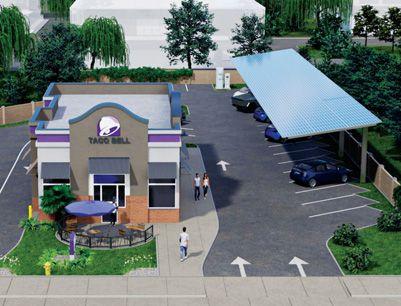
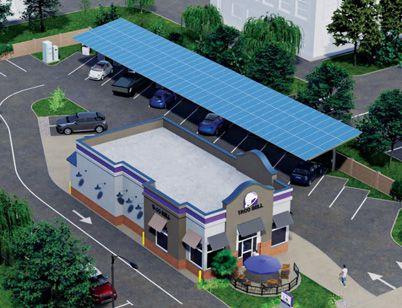
“This helps solve a huge demand problem we know is coming,” says ChargeNet Stations CEO Tosh Dutt. “Right now, EV charging is a ‘planned’ chore. It can take longer than filling up at a gas
station, a good location can be hard to find, and not everyone has a spacious garage to use as a charging station. What we’re doing is creating a seamless opportunity for a quick charge at a convenient place for a good price— and it’s good for the planet.”
Installation requires only one additional meter to support the charges but doesn’t require utility service upgrades. With the special service model and government incentives, Diversified Restaurant Group, the first to debut the ChargeNet Stations in California, will pay nothing upfront while pocketing a portion of the revenue generated from the chargers.
Each parking lot is equipped with six fast-charging stations, which sit under a solar array rooftop. Customers pull into the space, plug in, and order their meal.
Dwell times, which can be a pain point for EV owners and concern for operators, are smartly managed with rapid recharging capabilities and carefully targeted incentives. In the event of a power failure, restaurants can use the stored power to continue operations. No maintenance is required. If a charger or solar panel malfunctions or needs to be replaced, a service provider is dispatched the same day.
The software also consolidates data from a brand’s native app and point of sale to build an anonymized consumer profile for each EV driver. This means based on past orders operators can target promotions and obtain metrics about which menu items EV drivers prefer, further adding benefits for restaurant operators.
“ What we’re doing is creating a seamless opportunity for a quick charge at a convenient place for a good price—and it’s good for the planet.”
service world? Will digital currencies find more support? Can customers expect their favorite brands to start accepting alternate forms of currency as payment? Not necessarily, experts say.

However, Shelly Rupel, who has spent years working in the restaurant tech space, says the emergence of cryptocurrencies is indicative of a shifting paradigm.

“I think it’s all within reach to become more mainstream,” Rupel says. “There’s quite a few naysayers still in the [restaurant] industry … but it is within reach through technology that makes it accessible.”
Rupel, who previously owned a restaurant and worked for industry tech companies such as Toast, is currently leading the Devour Token project, which is a platform created specifically for restaurants. The project will benefit brands through initiatives like the Devour Restaurant App, which is designed to help drive revenue and repeat customers through incentives like dining to earn crypto.
As the digital restaurant space continues to widen in the after-glow of COVID-19, conversations surrounding cryptocurrencies and the role they may play in the future of quick service are becoming more frequent.
And while cryptocurrencies haven’t gone full-on mainstream yet—crypto exchange platform Gemini estimated last year that roughly 14 percent of the U.S. population owned some form of crypto—the relatively small slice hasn’t stopped some brands with serious name recognition from weaving crypto into their business models.
Recently, Burger King partnered with investment platform Robinhood to run a promotional deal where members of the Royal Perks loyalty club could win “a side of cryptocurrency” when they spent $5 or more in the Burger King app.
Full-serve Wings and Rings also incorporated digital money into its approach, albeit from a very different angle. The Cincinnatibased chain announced in 2022 it would begin acepting $40,000 franchising fees in Bitcoin.
So, what does this mean for the future of crypto within the food-
As one of the founders and developers of the project, she is working to develop a platform that will include a cryptocurrency, branded NFTs (non-fungible tokens), interactive games, and integration into loyalty programs, all aimed at enabling restaurants to capture some of the digital market. She says operators don’t want to get caught playing catch-up like some were during the pandemic, when customer preferences demanded a greater digital presence.
“From a restaurant perspective, I think it kind of goes back to the pandemic experience with many from a digital standpoint getting caught flat-footed and having to pivot very quickly to adjust to online ordering,” she says. “A lot of them don’t want that to happen again with something that is new [such as crypto].”
One of the largest barriers preventing crypto from becoming mainstream is the volatile nature of the currencies. While some virtual coins and tokens enjoy a somewhat more stable existence, the overall nature of the market is wildly unpredictable. The price of Bitcoin, for example, can rise and fall by thousands of dollars within a single day.
Rupel says that sort of roller coaster makes it difficult for businesses to accept cryptocurrencies as direct payment because they don’t know if what they took as payment one day will be worth the same the next.
That said, Rupel doesn’t think restaurants accepting cryptocur-
QSR ’s webinar series tackles hot topics in foodservice— and best of all, you can learn from the comfort of your own office. Take a deep dive into our collection today!

(Did we mention they’re free?)

www.QSRmagazine.com/webinars
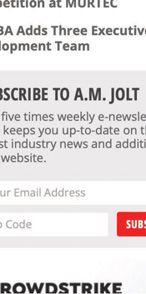

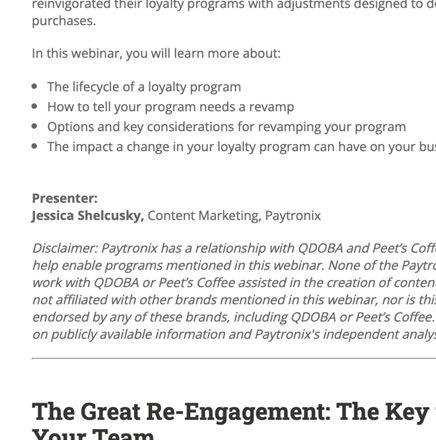



rencies as payment is a pipedream. Advancements in technology and more easily accessible options are helping to drive interest. “I don’t think we’re talking hypotheticals,” she says. “I don’t think we’re talking long term.”
Rupel says restaurant owners and operators are being presented with an opportunity to capitalize on the excitement surrounding crypto and NFTs. Even though crypto isn’t widely accepted today, the marketing opportunities at hand are very much in play.
“Ignoring this opportunity would mean missing out on something that is cutting edge,” she says, adding data gleaned from customers’ online interactions is an additional benefit of opening up more virtual channels. “There’s an amazing opportunity there as well.”
To help make cryptocurrencies more mainstream, accessibility to the virtual currency is going to have to become less complicated, says Brandon Mintz, CEO of Bitcoin Depot.
Bitcoin Depot provides ATMs that allow users to buy and sell cryptocurrencies with ease. The company partnered with Circle K last year in a deal that brought crypto ATMs to select Circle K locations.

Mintz says the lengthy process of exchanging U.S. dollars for crypto coins and tokens is presently acting as a barrier into the space for many people. He adds creating a verified account on certain crypto exchange platforms can take several weeks, which severely limits the number of people using cryptocurrencies, whereas creating an account using Bitcoin Depot only takes a couple of minutes.

The Bitcoin Depot CEO says the partnership with Circle K will bring cryptocurrency to the masses by making the process of obtaining crypto coins more convenient. Circle Ks that provide the platform’s services can be located on Bitcoin Depot’s website.
“Let’s say I have a Circle K near my house, and I see this Circle K location on Bitcoin Depot’s website,” he says. “I’ll just pop in and I’ll get Bitcoin and be in and out in a minute or two.”

Along with making it easier for people to buy and sell cryptocurrencies, Mintz says the partnership will drive business to the C-store giant by attracting new customers to Circle K stores.
Currently, Circle K doesn’t accept cryptocurrencies as a method of payment, in part, Mintz says, because of how massive the business is. The number of acquisitions and different payment networks within the Circle K system would make it difficult to change the way they accept payments. Even so, he says, the move toward accepting virtual coins and tokens as payment isn’t far off.
“I believe that you’re going to see more retail companies and more e-commerce companies accepting it [cryptocurrency] directly,” he says.

Mintz points to brands like Pepsi coming out with its own line of NFTs as evidence that the mainstreaming of this virtual space has begun. “We’re going to see trillions of dollars of institutional capital come into the space,” he says. q











solution, and FranConnect, a franchise management software provider.

Olo and Punchh power Roll-Em-Up’s mobile app, which is somewhat different than the industry standard. Wyland calls it “gamifying our app.”
Customers will have opportunities to earn free menu items with a certain number of purchases, but they’ll also have chances to scan QR codes at restaurants and enter sweepstakes. “I think that getting a free taquito or free chicken sandwich will move the needle so much,” Wyland says. “Our thought is that as we move into that next phase of marketing, it would be more sweepstakes where literally people are getting iPads and cars and things like that.”
One of the most encouraging parts of Roll-Em-Up’s future is that it has no core demographic. Wyland says the brand serves “flip flops, cowboy boots, and everything in between.” The industry veteran gets that sense just from sitting in a store for a couple of hours.
This means fewer barriers to entry nationwide, but the development executive is wary of spreading the brand too thin and selling too many deals across the country. From the beginning, the growth strategy has always been to work from the home base of Southern California—Riverside, San Bernardino, Ventura, Orange, and Los Angeles counties—and methodically venture outward. This eases supply chain costs and supports stronger co-op marketing. The chain signed deals in Central and Northern California to build out the Golden State, moved eastward with an agreement in Las Vegas, and of course, inked the mega contract in Texas and Oklahoma. Roll-Em-Up has eyes on Utah and Colorado for more franchises and will set aside Phoenix as a company-run market.
“The idea is to move across the country, but doing it in a very pragmatic way, but make sure that we’re taking care of the franchisees as we do,” Wyland says. “I get inquiries from Virginia and Florida and Illinois and Connecticut—all across the country all the time. And they’re really just put on the back burner. We’ll get there. But we want to make sure that we’re doing it in a smart way.”
In terms of real estate, Roll-Em-Up primarily searches for two options—a roughly 1,800-square-foot endcap with patio space
or a slightly bigger standalone drive-thru. The choice will depend on market; Wyland says drive-thru real estate can be difficult to find in Southern California, but easier in Nevada and Arizona.
The company would like to see more than 80 percent of its footprint have a drivethru window over time. In fact, Roll-Em-Up is opening the first one in Arizona after converting the space from a Starbucks.
Opening inside a gray shell costs roughly $450,000, Wyland says, which includes design, construction, signage, and FF&E. However, the Victorville, California, restaurant was converted from a Cafe Rio, and that cost $125,000. “If it’s ground up and that’s the best opportunity, then that’s what we’ll move ahead with,” the fastcasual executive says. “We have a lot of build-to-suit opportunities that a lot of our franchisees are taking advantage of right now. At the same time, if we come across a conversion opportunity, but also checks all the boxes when it comes to ingress, egress, traffic counts, and everything else, then that makes sense, as well.”

Wyland says taquitos have been served in Southern California for decades, but nationally, the food has become an after-thought on restaurant menus and in the frozen section at grocery stores.
But Roll-Em-Up is determined to switch that perspective, and the demand for change is clear. The brand’s TikTok account has well over 1 million views, and its Instagram more than 80,000 followers.
“We are the only multi-unit taquito focused concept in the country. Maybe the world,” Wyland says. “Not just franchise concept, but just overall concept. I think that plays a big part. Almost every restaurant around the country is fighting over chicken sandwiches and cheeseburgers and pizza. We’re staying in a category by ourselves, so it does make it a little bit easier from that standpoint from a marketing aspect.”
“It just comes down to what we’ve all learned in the industry—you have to start by providing quality products and making sure that you’re providing exceptional service,” he adds. “If you can combine those two things, then the likelihood of retaining [customers] goes up immensely.” q
Your restaurant might not need a burger-flipping robot exactly, but it does need tech.
BY STEVE ROBERTSThere were a few major news stories involving the hospitality industry in 2021. One was a growing labor crunch, which saw restaurant operators desperate to lure reluctant workers with signing bonuses and other perks. Another big headline-maker was the further adoption of automation by restaurants, in the form of both behind-the-scenes artificial intelligence and robotic servers. Naturally, the robots got most of the attention, thanks to some viral videos and the sheer novelty factor.
It’s tempting to make a direct link between these stories: What if the labor crisis in hospitality could be solved by replacing everyone with AI chefs and robotic wait staff? It could happen, and it’s not a giant leap of the imagination to envision robot-staffed kitchens and dining rooms becoming commonplace and bringing us one step closer to Fully Automated Luxury Communism. (And no, I did not just make that up, nor do I endorse any notion that work isn’t fulfilling). In the quick-serve and fast-casual spaces, robotics makes a lot of sense—in large part, you’re serving a customer base that places a premium on convenience and efficiency and a workforce seemingly unmotivated to provide the same. For patrons of other types of restaurants, however, the human touch is one of the core delivery aspects of the dining experience.
That can’t be replicated by a machine—not yet, anyway—but savvy restaurant operators are finding ways to strike a balance between the benefits of automation and the eating public’s desire for personal connection. Imagine, a humanoid robot, fully articulated, polite and ready to serve, but with the language processing ability of Apple’s Siri. “No, I asked for my salmon to be just north of rare, not for my mom to get a side of pear!” Moreover, Chili’s, back in the days when Norman Brinker was at the helm, actually dished out psychology training for servers, wrapped in customer service packaging. I’m not sure an unruly intoxicated bar guest is ready to be removed of their keys by a firm, but pleasant AIrobotic bartender.
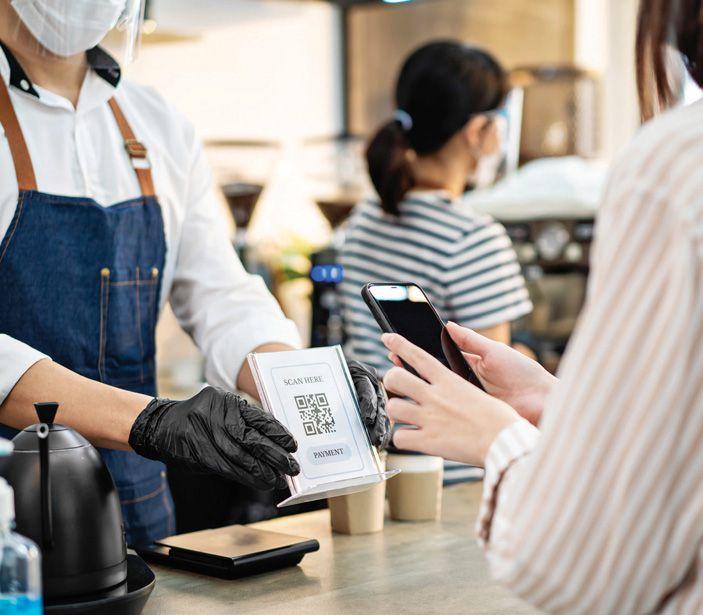
Skepticism aside, robotics is coming to a restaurant near you, perhaps not serving you directly, but definitely taking on some repetitive task. As I write this Roomba just made a pass through my office.
The industry as a whole is generally on board with the notion of an expanding and increasingly sophisticated tech stack. A recent TD Bank survey of U.S. franchise owners and operators found that their top priorities for 2022 include investing in mobile ordering (54 percent), delivery services (47 percent), POS digital signage and other in-store tech (45 percent), and alternative payment methods (37 percent)
Moreover, the area where we’re likely to witness the biggest strides in restaurant tech is in the development of new AI applications. The global market for artificial intelligence is projected to grow to a value of $190.61 billion by 2025. In the restaurant business specifically, AI has already made significant inroads into a number of areas, comprising the basis for almost all of the new adaptive automation implemented in restaurants to assist with production. According to one recent report from Lightspeed, 50 percent of U.S. restaurant operators are planning to implement some form of automation technology in the next two to three years.
Over the course of the pandemic—but in the past year in particular—we’ve seen an abundance of reports indicating that large

of Firehouse Subs. “[ The government help] may have done its job in holding off closures for the overall industry.”
Fox was among those who thought shuttered limited-service restaurants—both standalone and in-line eateries—would flood the market for operators like Firehouse to snap up. “It didn’t play out the way people thought—or hoped—it would,” he says. Drive-thrus became “the hottest of commodities,” he adds.
“You could have a poor performing unit that became a great performing one,” Fox says. The decision by many fast casuals to seeks sites that would allow for drive-thru lanes—either standalone units or endcaps of shopping strips—plus ongoing growth by quick-service companies, has caused demand, land costs, and rents to soar, Fox and others say. When Ohio’s sole Corner Bakery, a standalone eatery with a drive-thru, closed in suburban northern Columbus, another fast-casual tenant new to the market was announced the same day.
Similar restaurants that became available in top-three tier locations “were absorbed immediately,” notes Brad Giles, vice president of real estate for Savory Fund. After the first few pandemic months, “competition for good space grew,” including sites without drive-thrus. And it has become more expensive. “We are seeing this happen everywhere,” he says. “If you look at submarkets in Kansas, even in Utah, there are no shortage of takers for space.” Not only have competition and prices for sites increased, but “groups are making decisions quicker.”
The view the pandemic didn’t create a strong supply of great second-generation sites isn’t unanimous. Dan Rowe, chief executive of Fransmart, says his prediction of a boom “absolutely” came to fruition. “We’re seeing it across the board, all across the country,” he notes. “We are aggressively making very good deals.” Rowe says deals are available everywhere, although he notes the best ones are in city centers. Only now are these markets tightening. “A year ago, we were able to ask for the moon. This year they will be normalized, and next year will be a landlord’s market.” q
guessing it will happen in the [quick-service restaurant] world, which will benefit the restaurant and the environment,” Brown says. To illustrate how some of these solutions can be put into practice, Clark highlights Subway. He says the fast-food giant donated cookies to Feeding America or other locations. Subway also looked at how to cut peppers. “One of the illustrations in the employee handbook was incorrect, so they had to go back and change the language slightly. They were able to create an extra pepper out of a bag of peppers, getting more pepper slices from one bag. When you multiply it by tens of thousands of locations nationally and internationally, that is tens of thousands of pounds of peppers,” Clark says.
The mission of 412 Food Rescue, a nonprofit based in suburban Pittsburgh, is multifold: to prevent perfectly good food from entering the waste stream by redirecting it to those who are experiencing food insecurity. Set in a converted Moose Lodge, the solarpowered Millvale Food + Energy Hub is the home to The Good Food Project, an initiative of the 412 Food Rescue. Along with its partners New Sun Rising and Sprezzatura Café, the Good Food Project transforms surplus food—gathered from a local restaurant food distributor—into healthy meals that are then distributed in compostable containers to seven nonprofits.
Head chef and project manager Greg Austin estimates 700–800 meals are delivered weekly, which includes a main dish, side dish, and dessert. Austin aims to double the meals by year’s end, noting that last year, The Good Food Project prepared 16,000. The kitchen is one of the world’s first zero-waste kitchens, as well as a zerocost kitchen, as the entirety of its products and ingredients are from donated food. “I think it’s evident that it’s environmentally and socially critical that we restructure our thinking and practices around production, in all sectors. I’m honored to be part of an effort that highlights what’s possible,” Austin says. q
numbers of former hospitality workers have no intention of returning to the industry. There are, of course, plenty of Americans keen on working in restaurants, either as a long-term career or a stepping-stone to something else. Restaurant operators should look at adopting new technology not as a means of replacing human beings, but as a way to make those humans’ jobs more satisfying.
Realistically, your operation most likely doesn’t need delivery drones or a robotic arm in the kitchen flipping burgers. To determine what technology would be most beneficial, restaurant operators need to consider what their most pressing needs are, and what functions their current system is not fulfilling. The importance of harnessing the power of data cannot be overstated. The modern restaurant collects more and more information, and puts it to good use. That information comes from a number of sources—including platforms, and cloud-based solutions—but all of it enables restaurants to improve efficiencies. Your tech stack should employ machine learning-based algorithms that can use that data to predict order wait times based on capacity and demand. It should also have powerful analytics capabilities that can reveal, for example, which items sell best at certain times of day.
Customer data, collected through loyalty programs and apps, can be used to boost consumer engagement by allowing the restaurant to deliver personalized offers and other loyalty-based perks. In a fully connected operation, the consumer-facing front is connected to the back office and kitchen operations, creating a unified experience. A mobile back-office system can be accessed on any device. This puts the right data in managers’ hands, enabling them to spend more time connecting with customers and less chained to their desks. The possibilities are limitless, and the technology is evolving at a steady clip. Machines will never replace the need for human workers—nor would most people want them to—but AI and robotics can and will take a role, improving the experience of the guest, and worker alike. q
Ascentium Capital ................................23 281-902-1931 | Ascentium.info/qsr22



Berner Air Curtains ...............................74 800-245-4455 | berner.com


Botrista ...............................................10 Botrista.io | sales@botrista.io
Envysion .........................................18, 19 877-258-9441 | envysion.com
FIFO Bottle ..........................................35 800-453-3436 | fifoinnovations.com
Frontline International ...........................6 877-776-1100 | frontline.com

Fuzzy’s Taco Shop ................................70 817-624-8226 x.2 | myfuzzys.com
Ghirardelli ...................Inside Front Cover 800-877-9338 | ghirardelli.com
Innovative Beverage Concepts ..............17 888-662-2334 | MOCAFEUSA.COM/matchagreentea-qsr/
Intellihot ................................Back Cover 866-447-0209 | intellihot.com
McCormick McCulinary .........................13 855-552-9797 | McCormickForChefs.com/McCormick-Culinary

North American Bancard ......................75 866-481-4604 | NYNAB.com
Red Gold ................................................3 866-729-7187 | RedGoldFoodservice.com
RF Technologies ...............................5, 79 800-598-2370 | rfdrivethru.com



Robot Coupe ........................................76 800-824-1646 | robot-coupe.com
Science On Call .............Inside Back Cover 312-521-0016 | scienceoncall.com
Simplot .................................................... 9 800-572-7783 | simplotfoods.com
SONIC ..................................................31 Sonicfranchising.com
The Human Bean ..................................15 541-608-0564 | thehumanbean.com
Tronex .................................................25 800-833-1181 | tronexcompany.com
For
information on these companies, visit www.QSRmagazine.com/connect/
Vito Fryfilter ........................................27 847-859-0398 | vitofryfilter.com
Welbilt ................................................39 800-424-2411 | garlandgroup.com
Worcester Industrial Products ..............33 800-533-5711 | Shortening-Shuttle.com


SMART CHAIN ...............................................41 - 68


Acrelec...............................................51 877-334-9737 | acrelec.com/drive-thru
Coates................................................43 312-374-1365 | coatesgroup.com
Delphi Display Systems ......................45 714-825-3495 | DelphiDisplay.com

DSA Signage ......................................55 866-333-0670 | dsasignage.com
GDS ...................................................65 815-282-2328 | go.gds.com/midas-aria
HME ...................................................59 858-535-6000 | hme.com/timers
Peerless-AV .......................................53 630-375-5100 | peerless-av.com
Predictika ..........................................61 510-252-1367 | Predictika.com
Ready Access .....................................61 800-621-5045 | ready-access.com
RF Technologies .................................63 800-598-2370 | rfdrivethru.com

STRATACACHE ....................................47 877-761-1122 | stratacache.com

The Howard Company .........................49 800-782-6222 | howardcompany.com

Xenial ................................................57 855-936-4251 | xenial.com/solutions/drive-thru
SPONSORED CONTENT
What was your first job?
I’ve been working in restaurants since I was 15 years old. My first “real job” was at Domino’s. I spent almost eight years learning the business from a great franchisee. I eventually got a little bit jaded on the lower quality and boring menu and saw the opportunity to do pizza, the world’s greatest food, better. I started Toppers Pizza in 1991.
What’s your favorite cuisine outside of Toppers?
The answer is pizza from other places. It sounds like a copout, but it’s the truth. I’m always trying new pizza, especially when I travel. I don’t believe I’ve experienced the geography of a place until I’ve tried its pizza.
Who inspires you as a leader? If I had to pick someone well-known, I really admire Jimmy John Liautaud. He is a no-BS, keepit-simple, absolutely genuine and caring leader who built an incredible brand from one store to 3,000.
What’s the best piece of advice other restaurant executives should hear? The most important piece of advice I can give is to do something that you believe in. People do wonderful work when they’re engaged with people, doing something that matters.
What are some of your interests outside of work?
I’m active and disciplined. I get up early and do my Zen routine: yoga, meditation, journaling. I love to read, bike, run marathons, and garden. I’m in love with my wife more today than ever. We travel and dote on our five kids.
Toppers Pizza was built on a formula of technology and innovation that set us up for success, even amid the pandemic. We’ve created a strong infrastructure to allow us to remain resilient and competitive, and it’s made us one of the fastest-growing pizza chains in the country.
While much of the restaurant industry struggled, the quick-service pizza sector emerged a true leader. With consistent menu innovation, a strong digital presence that ranks among the top of quick-service pizza concepts, and a $1 millionplus system-wide AUV, Toppers Pizza is primed for major growth.

Outsiders ask us what separates us from the pack. People want to work at places that do some-
thing that matters and believe in what they do. Great leadership and great cultures built around serving the customer and being who you are will always win—with team members and customers.
Customers today are looking past the $5.99 coupon. They want to do business with restaurants that care and do it right. We’re blessed to be in pizza because not only is it a massive segment, but it’s dominated by the big chains that are fixated on the mass production of $5.99 products. That’s not Toppers.
It’s easy to be special and differentiated when all of our main competitors are doing exactly the same thing as each other. At Toppers, we know who we are and are focused on executing at a high level. q





